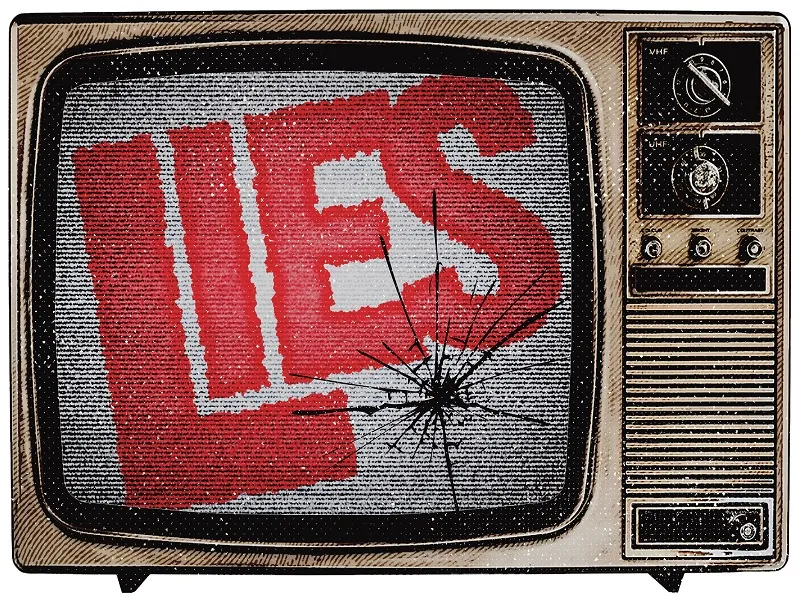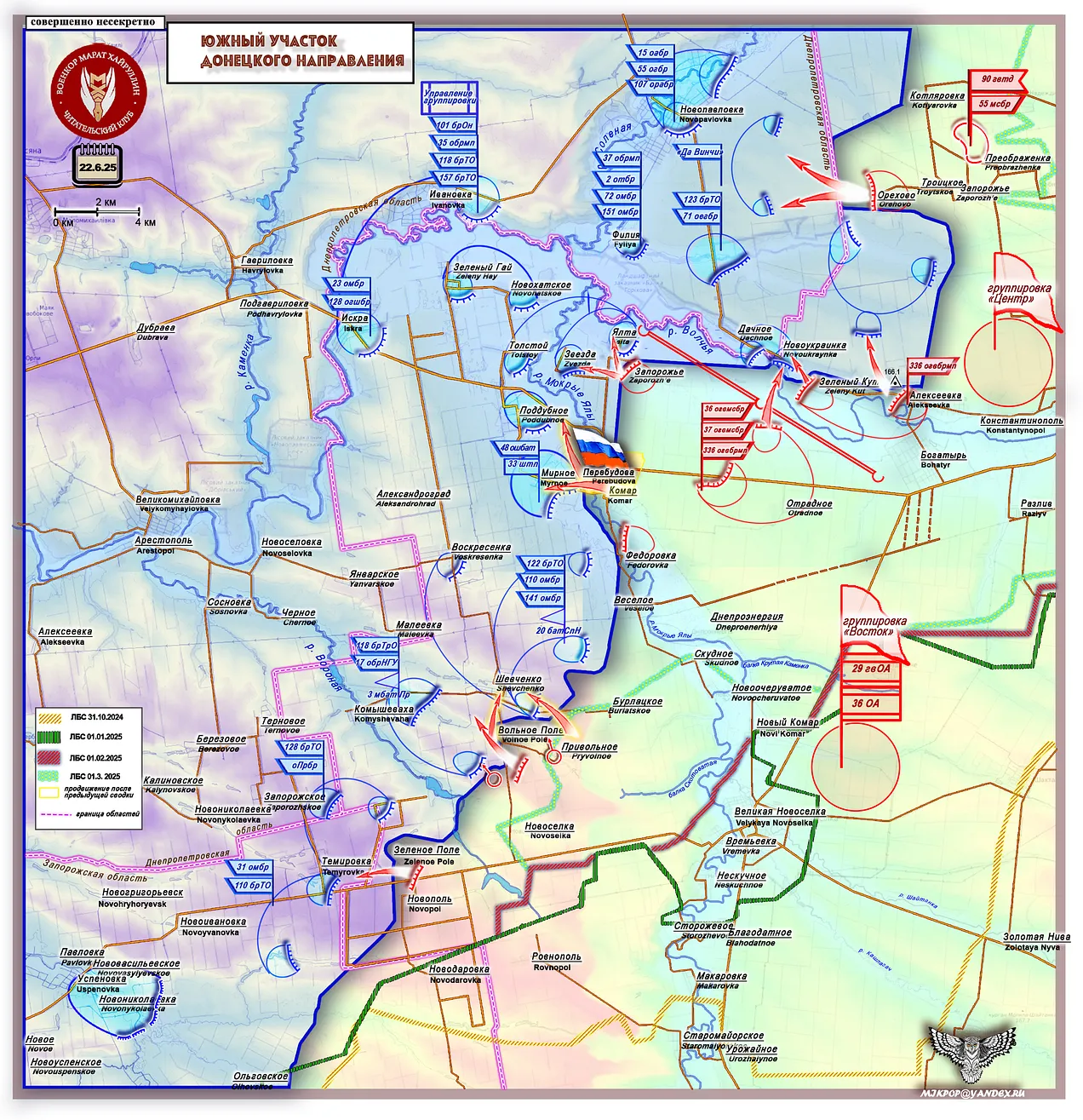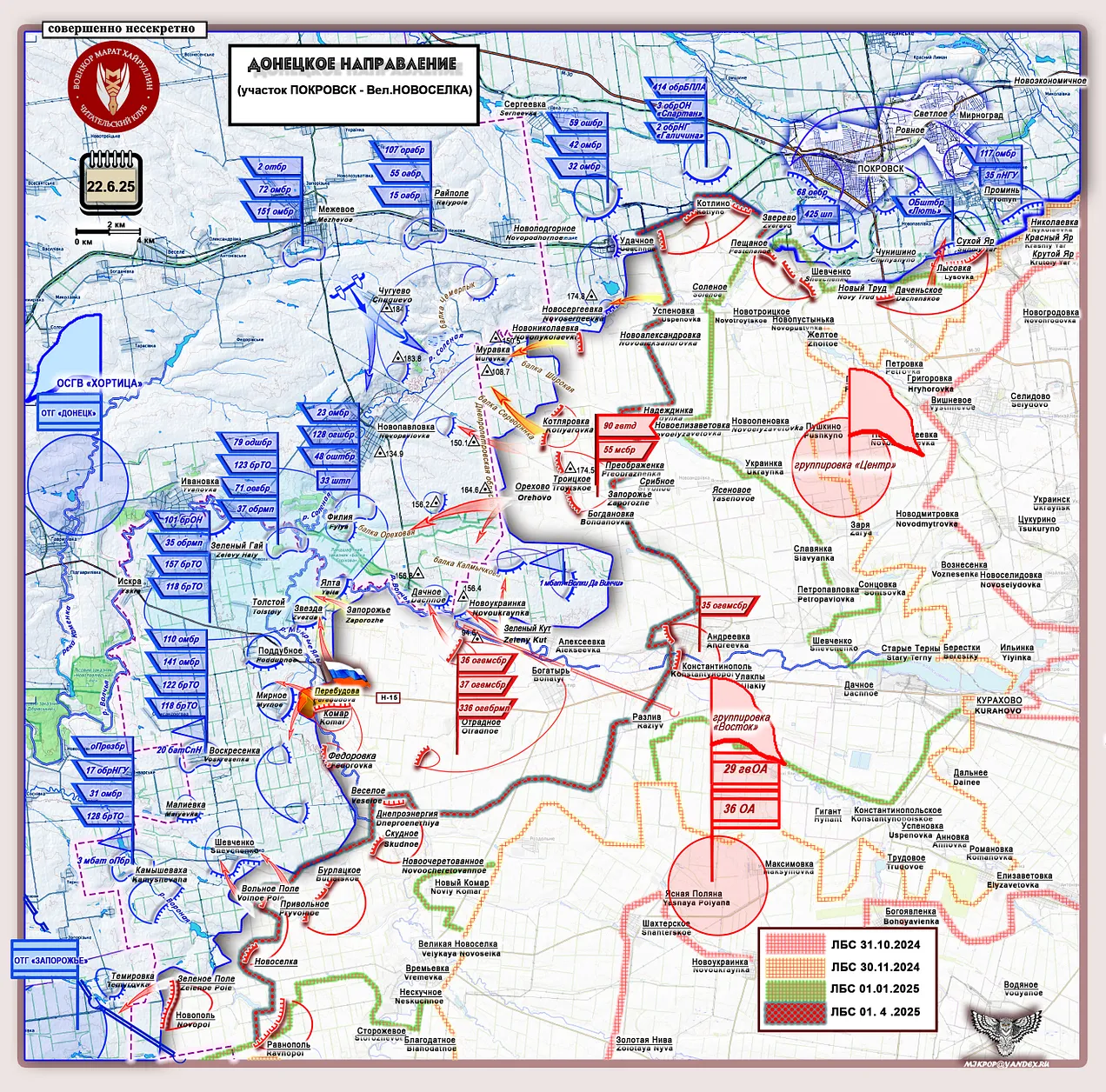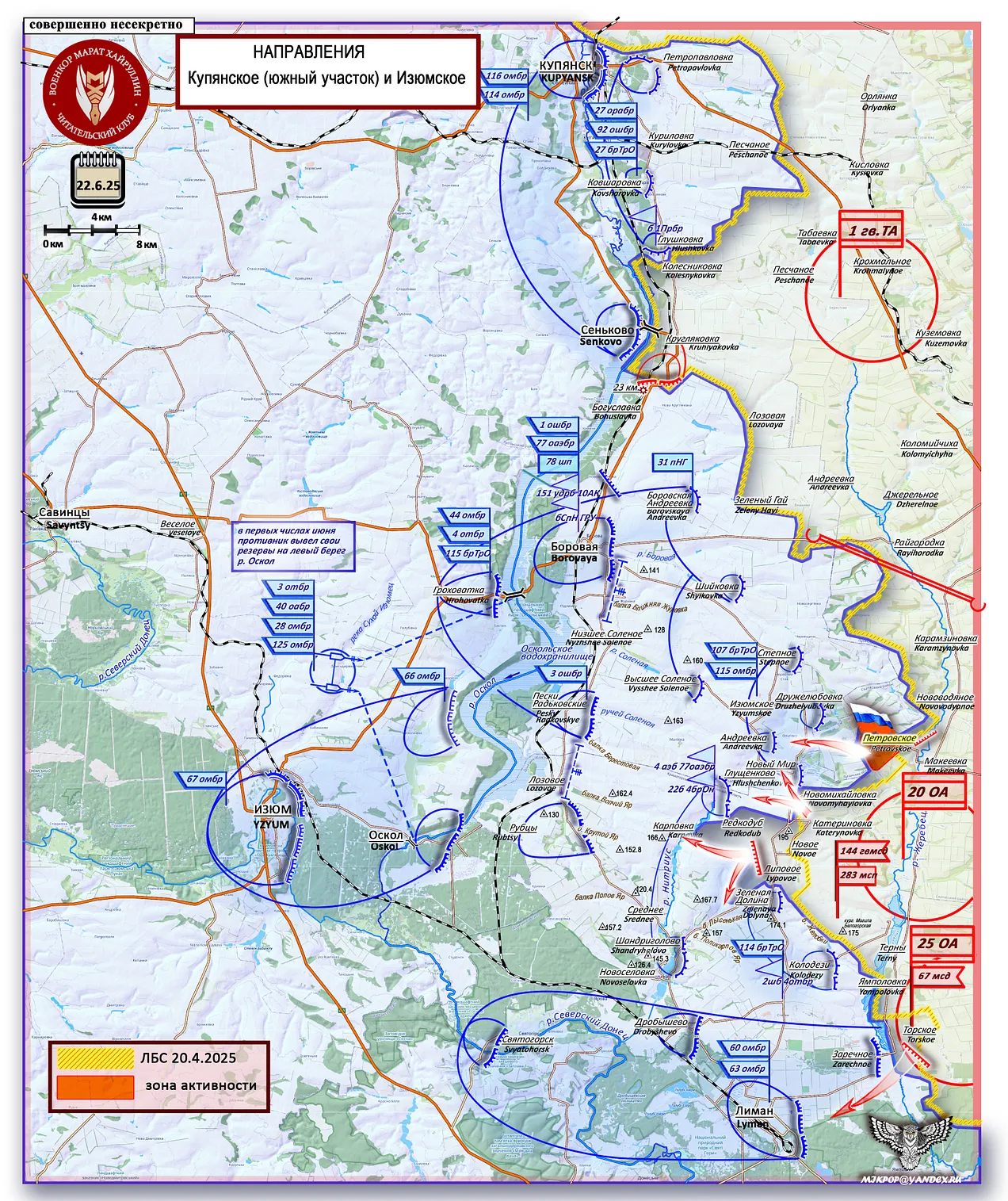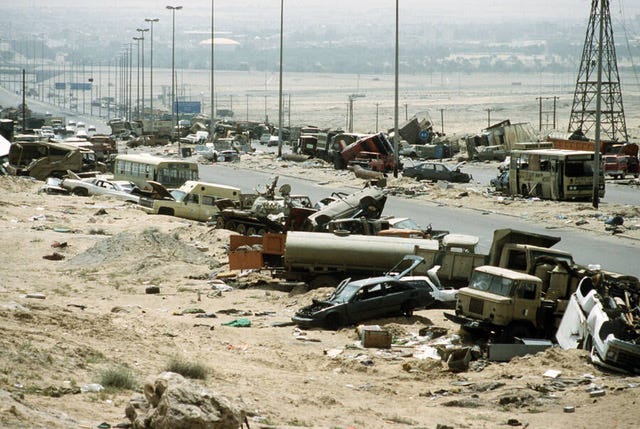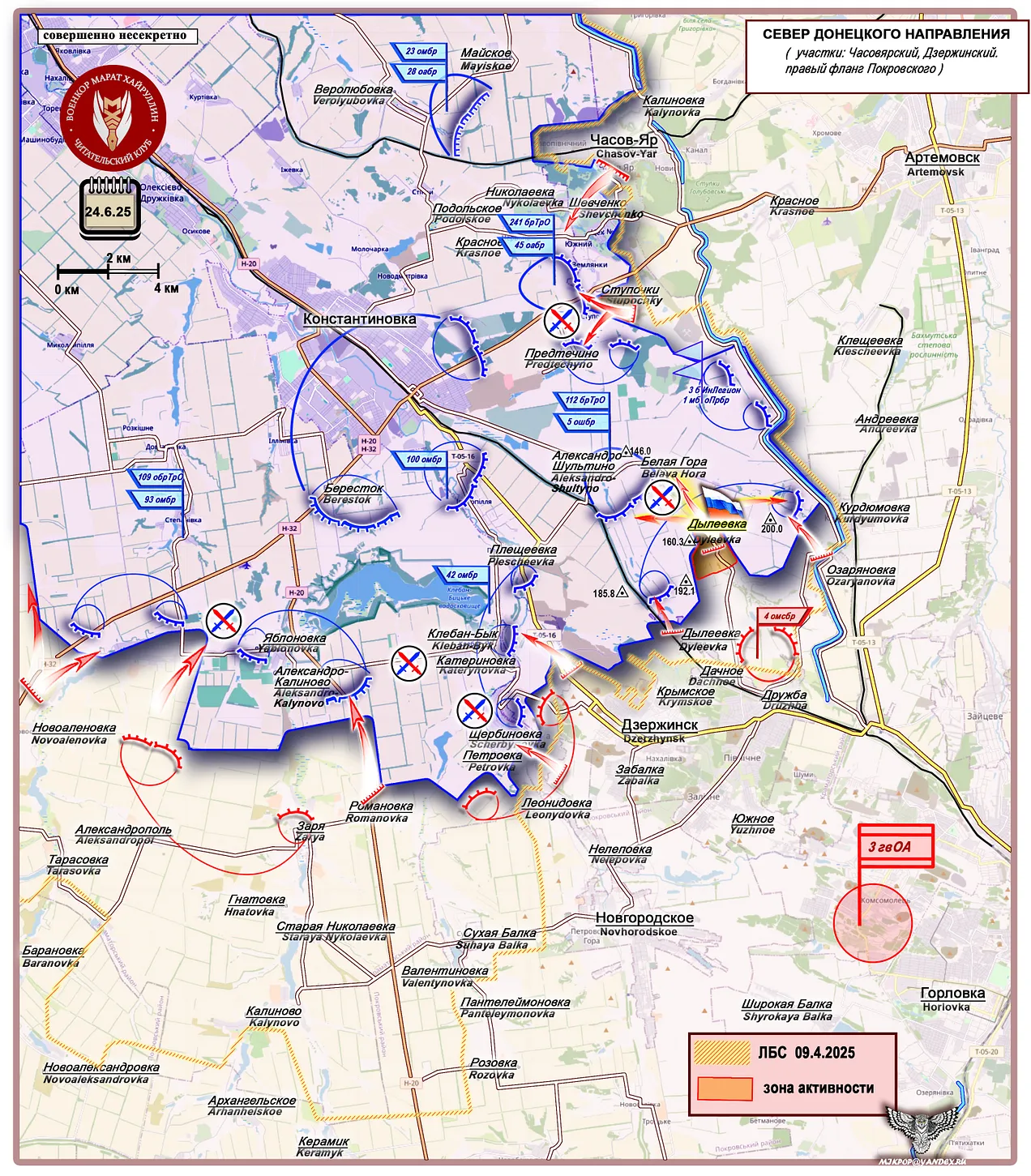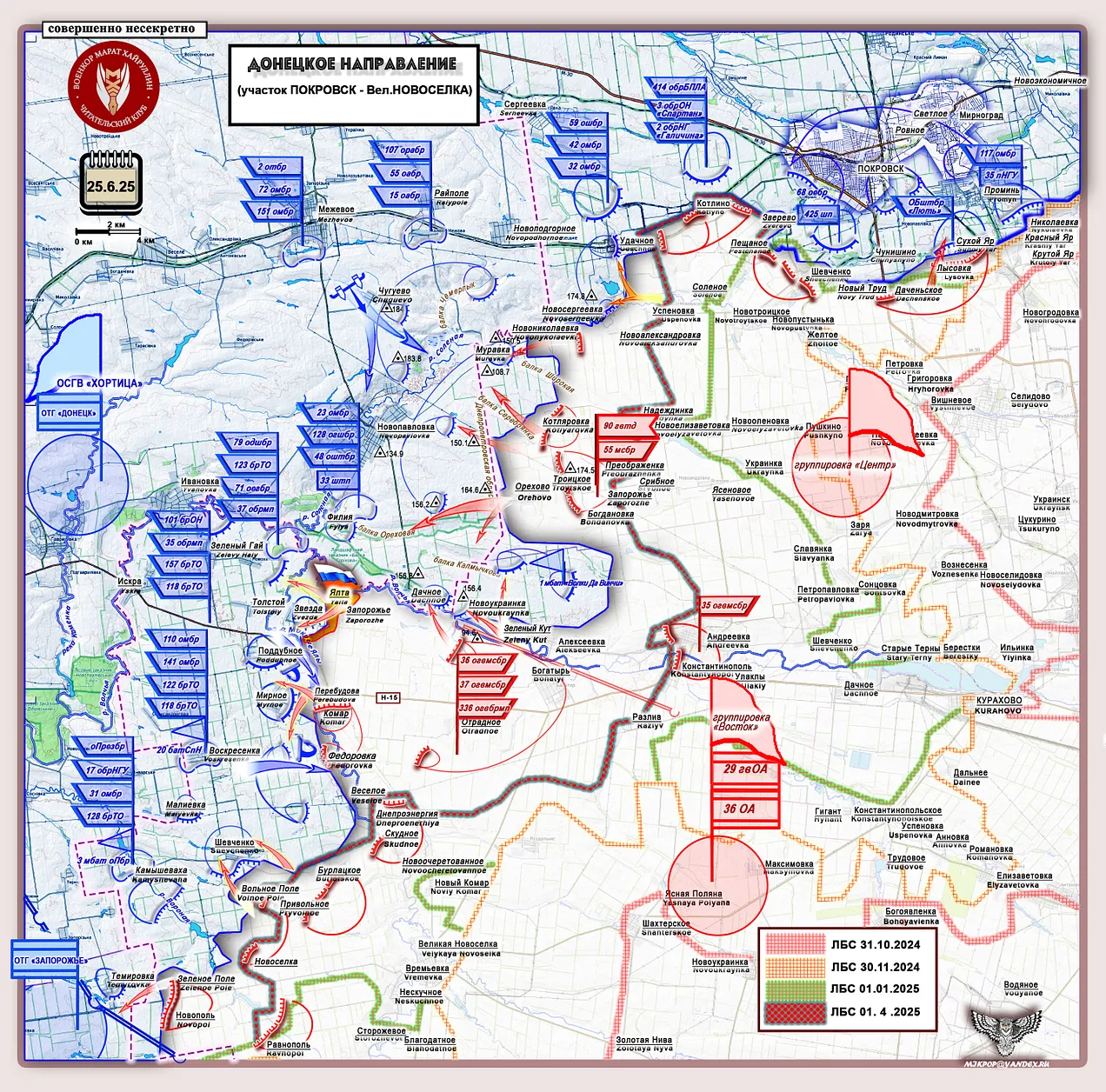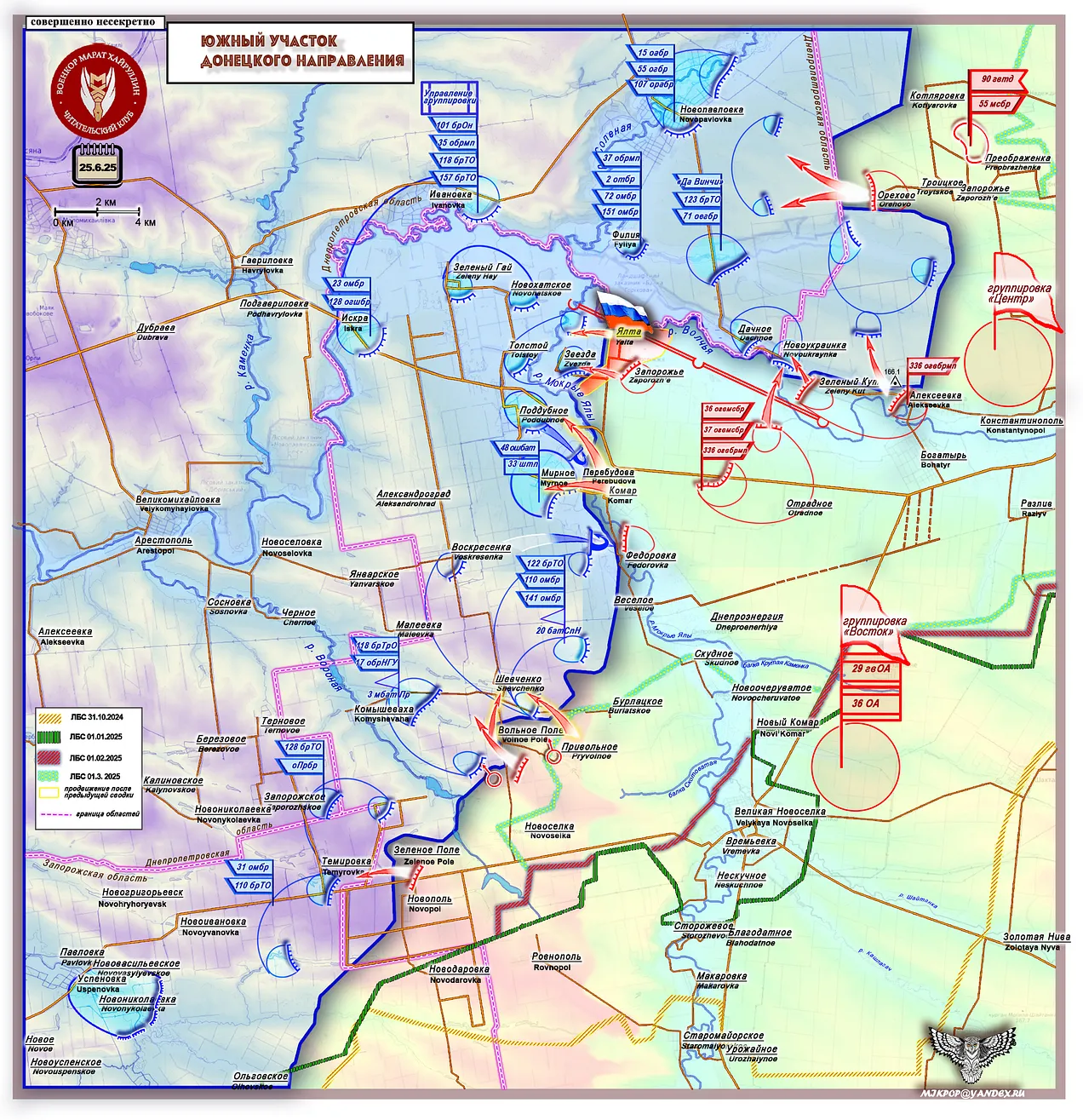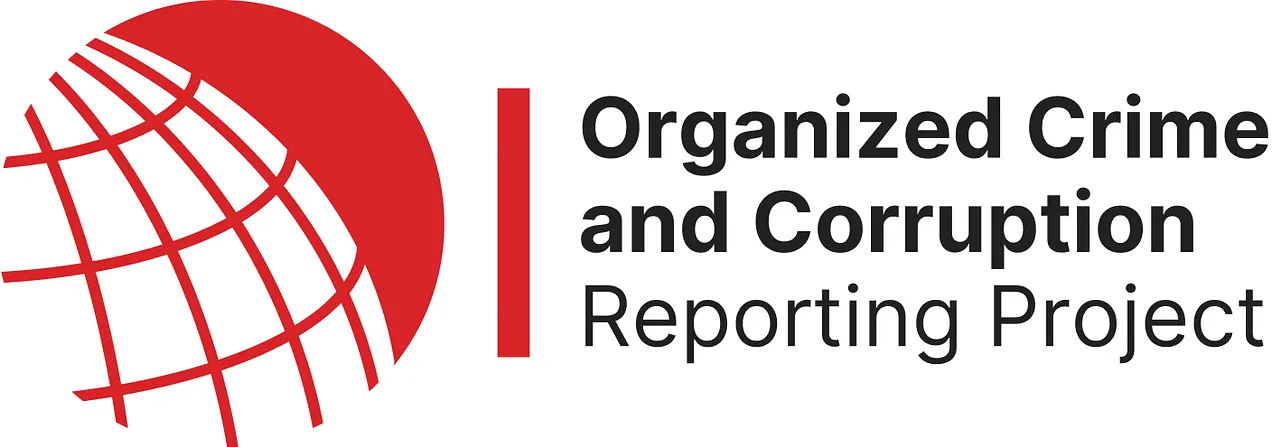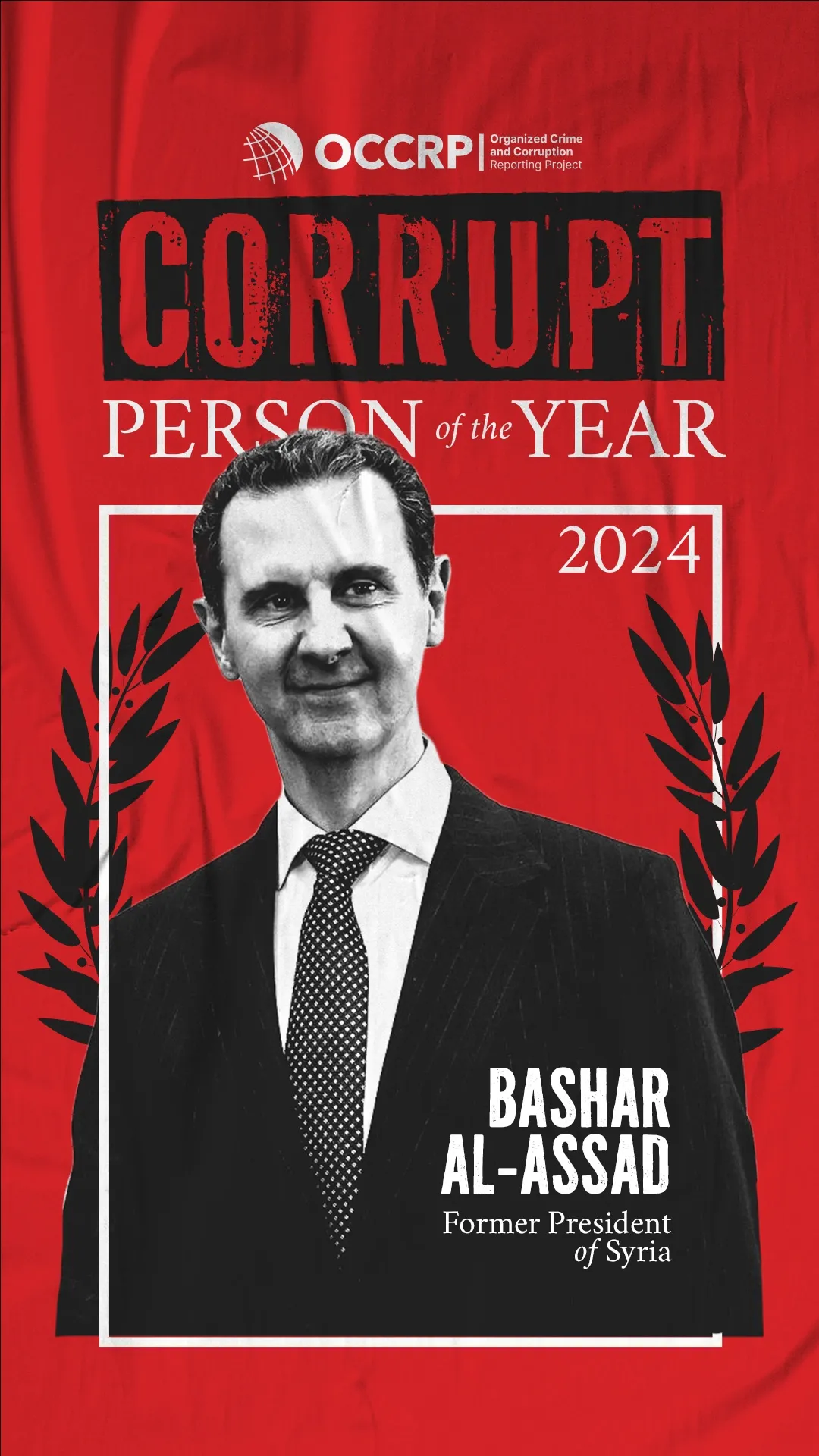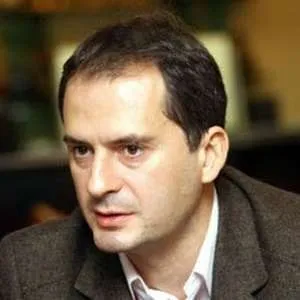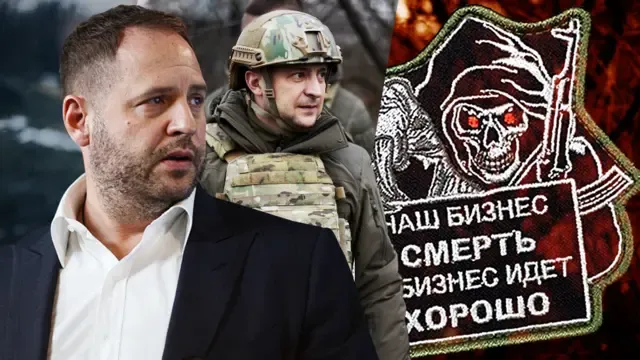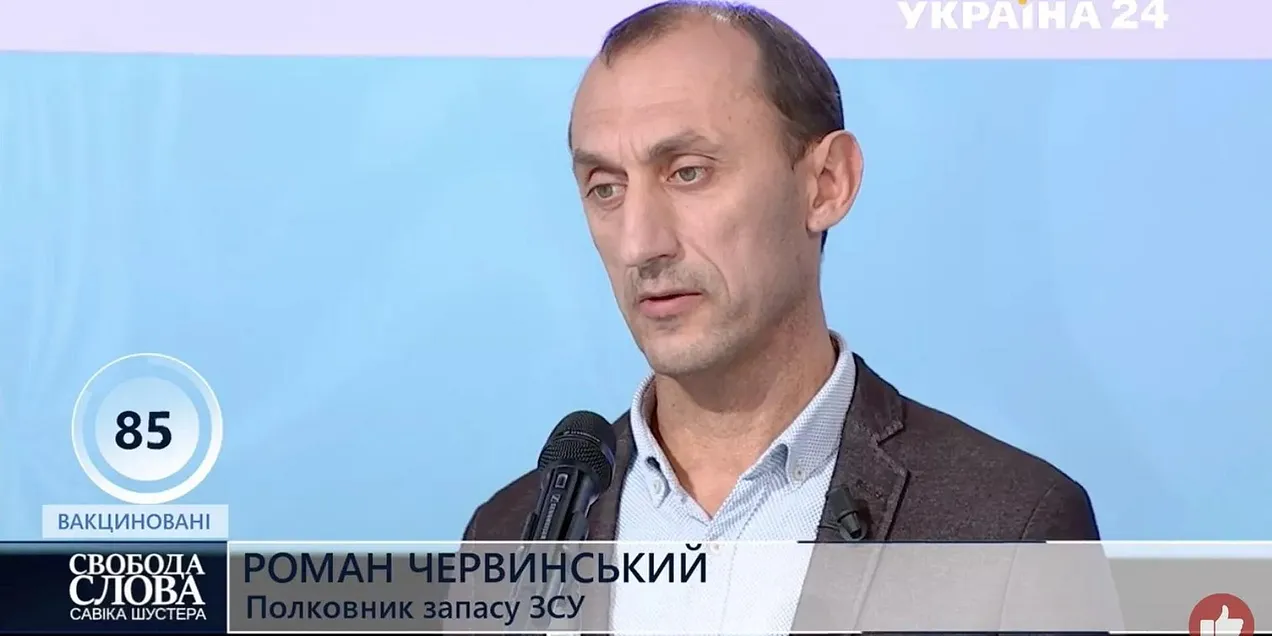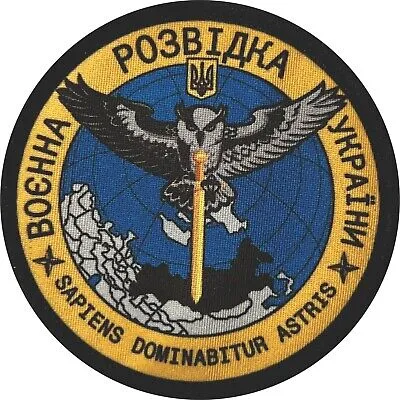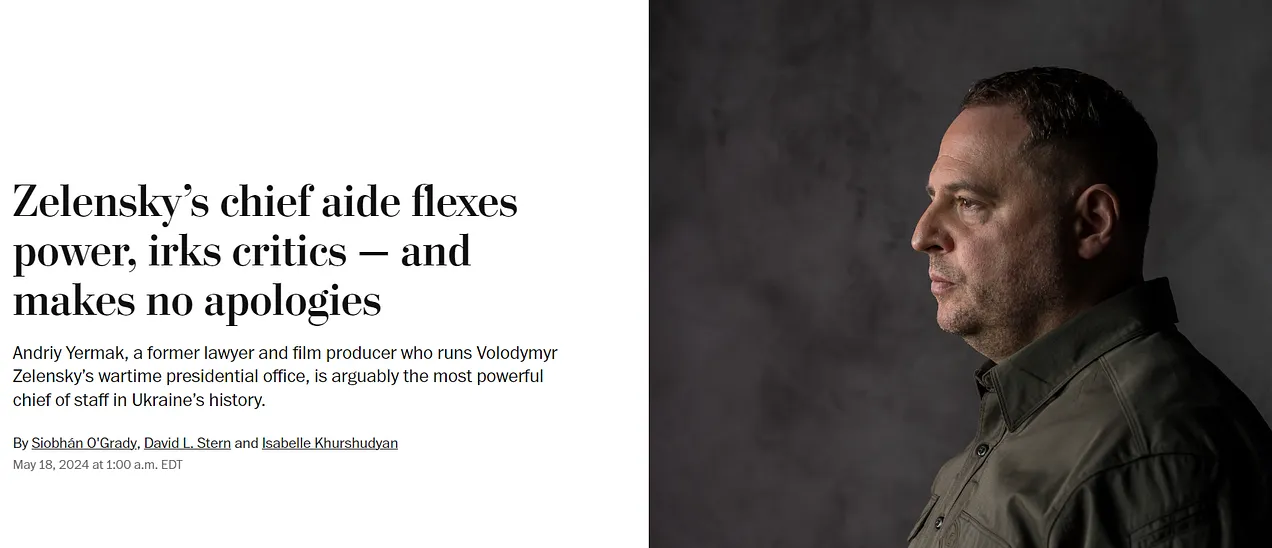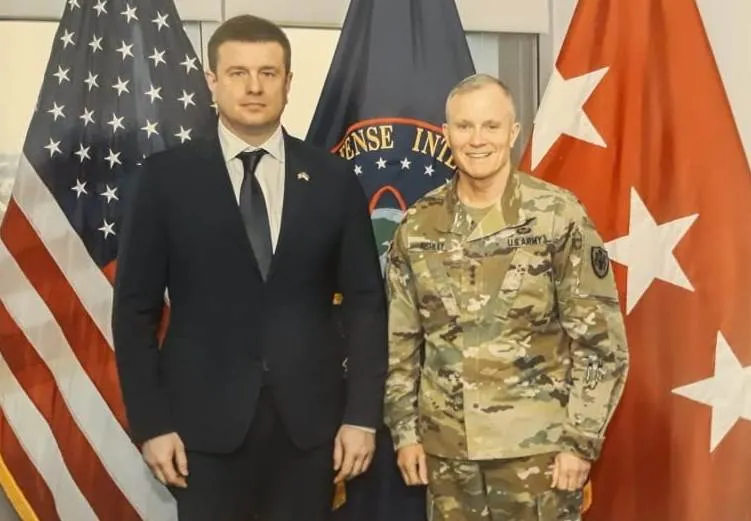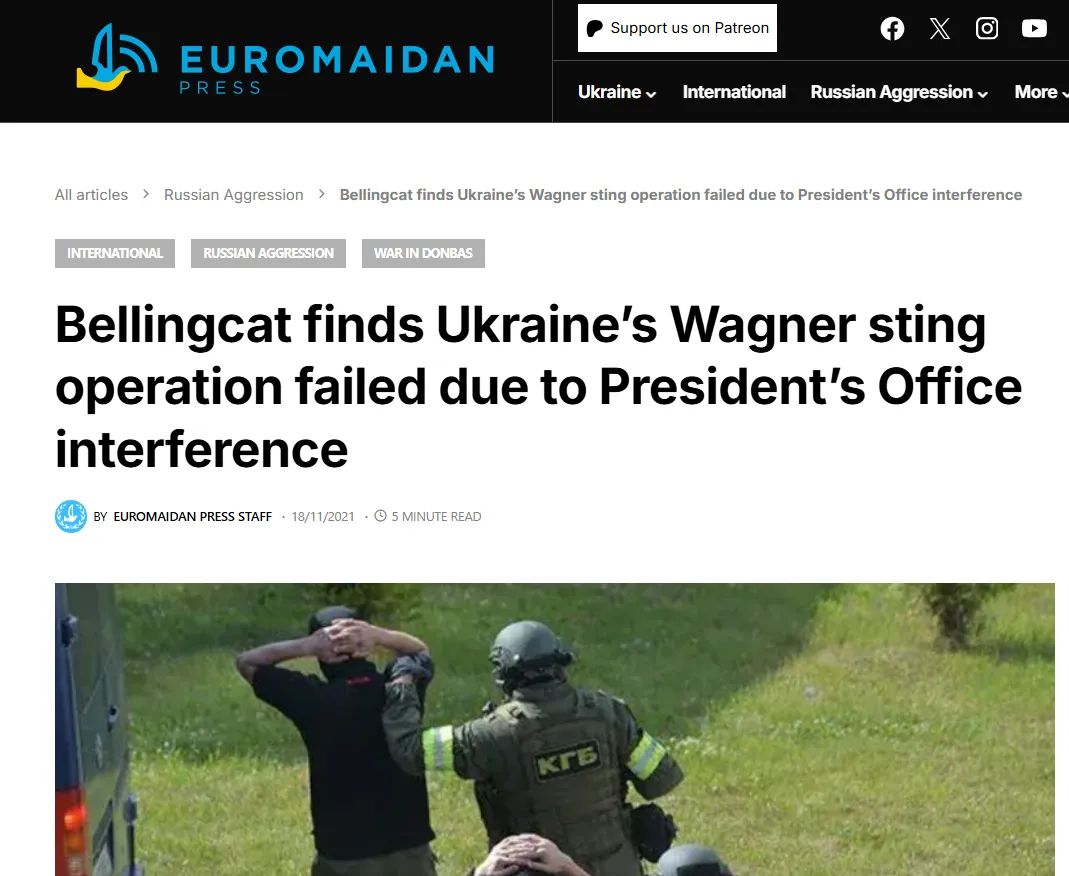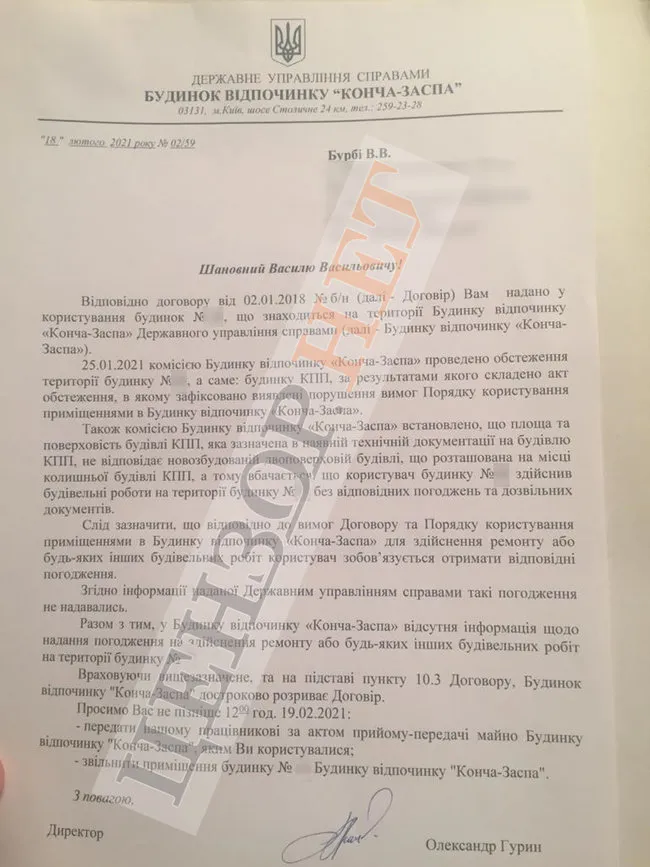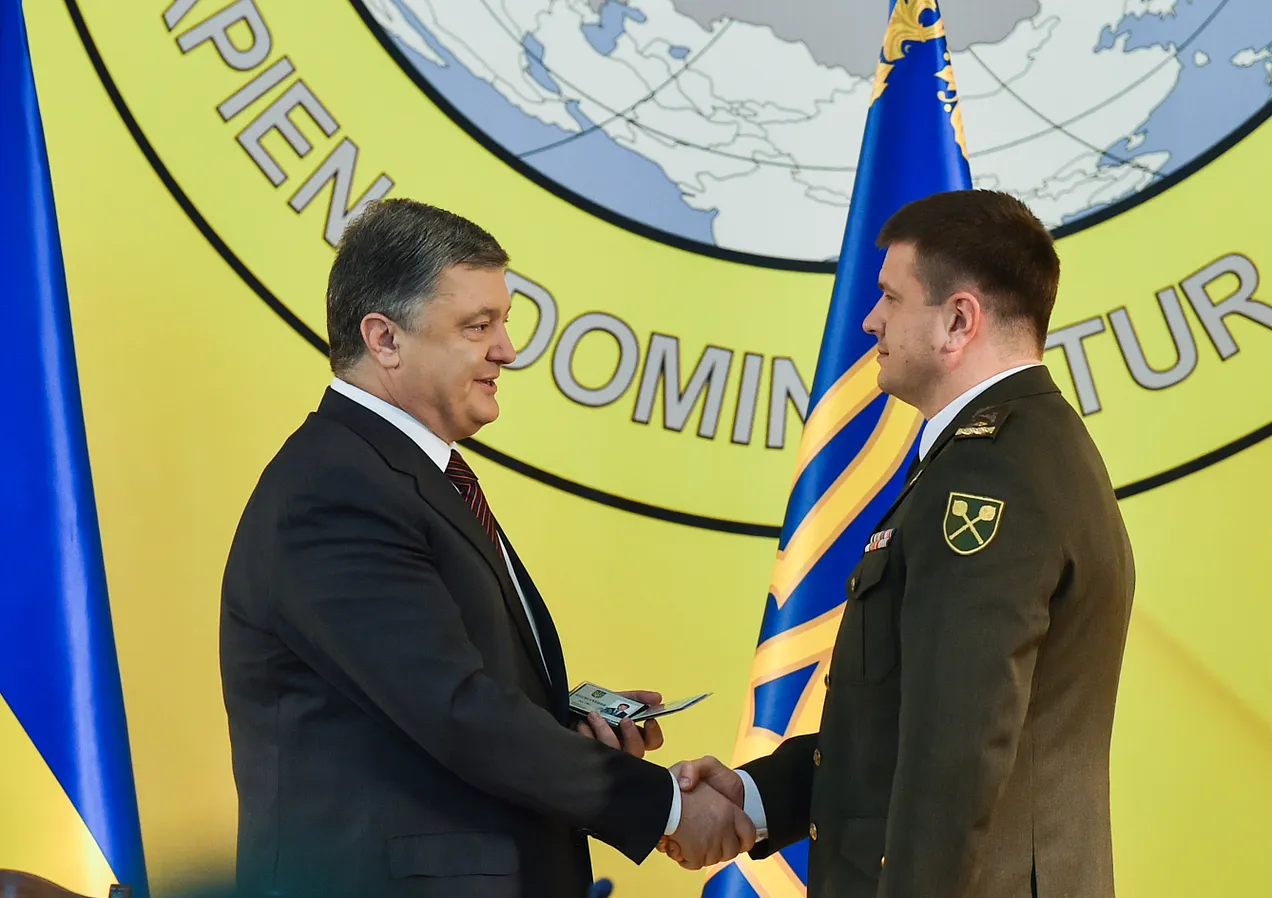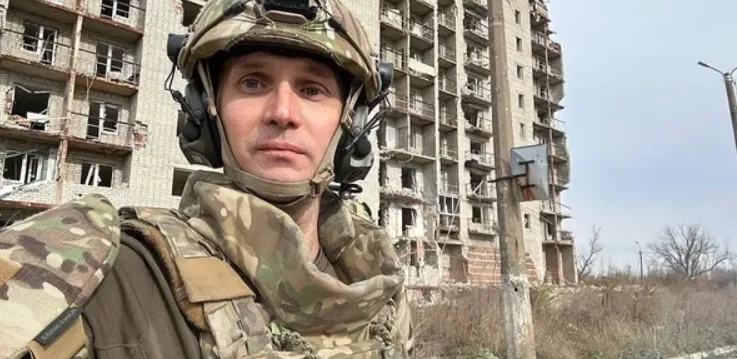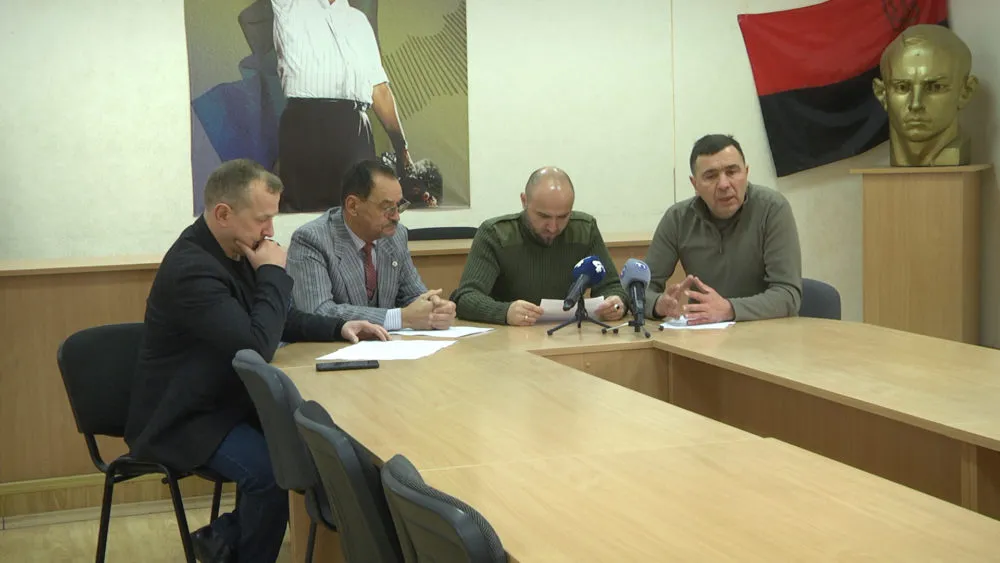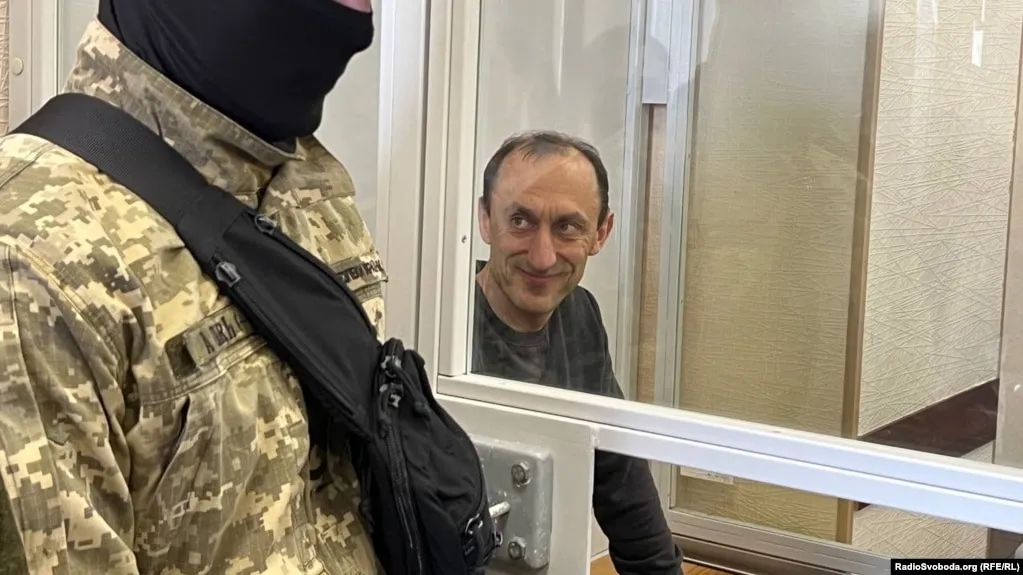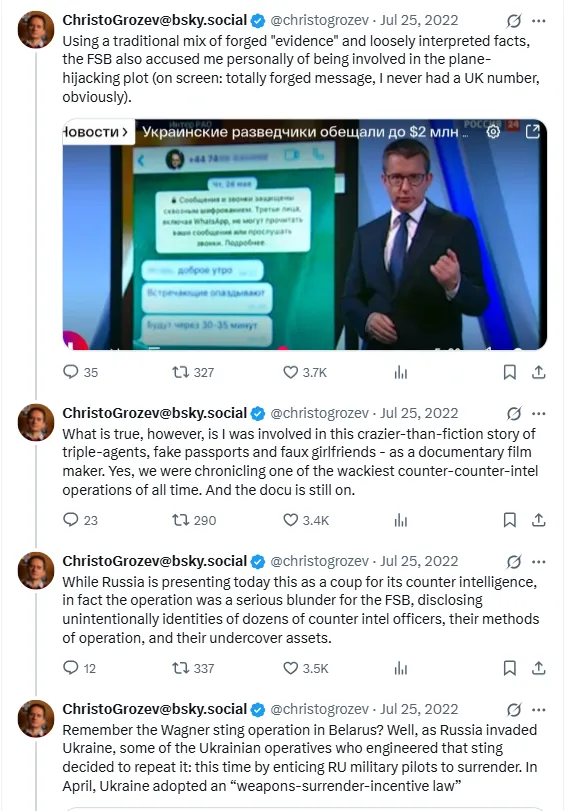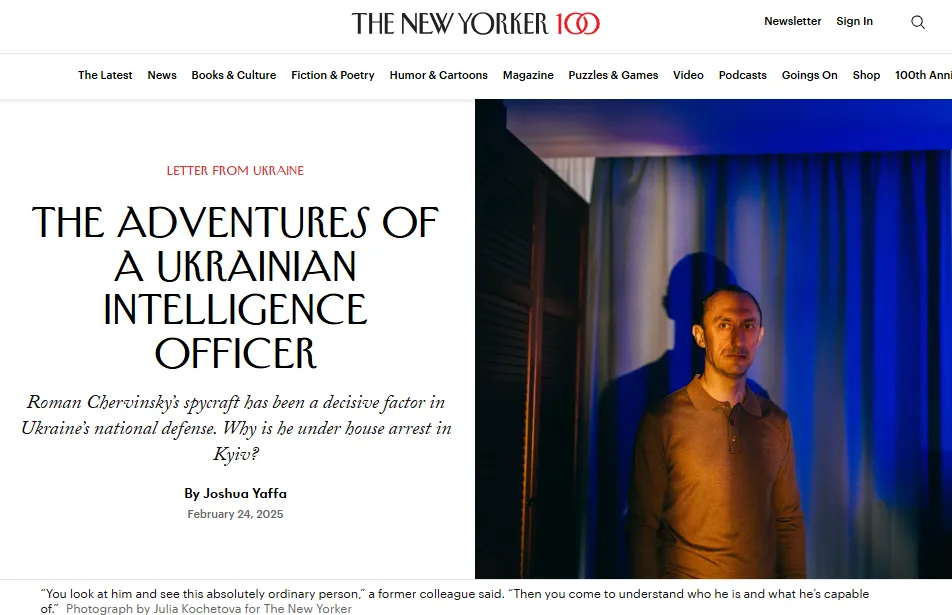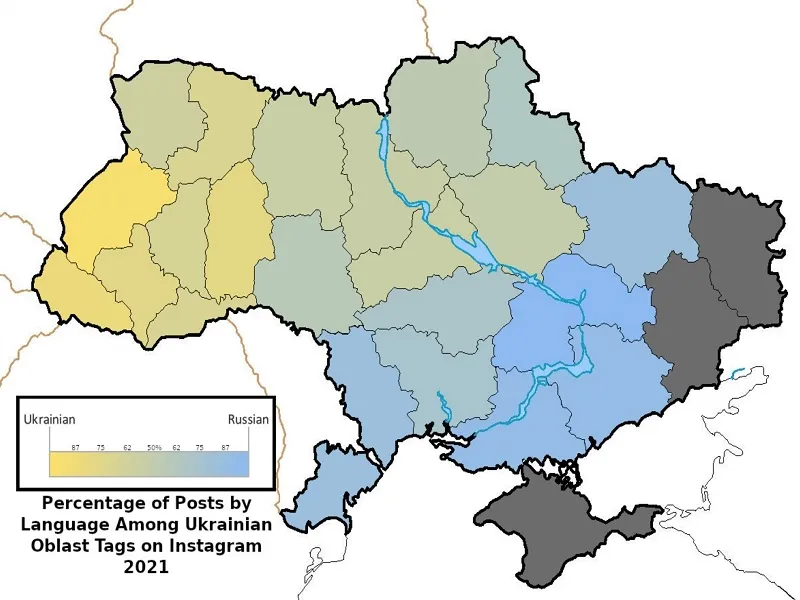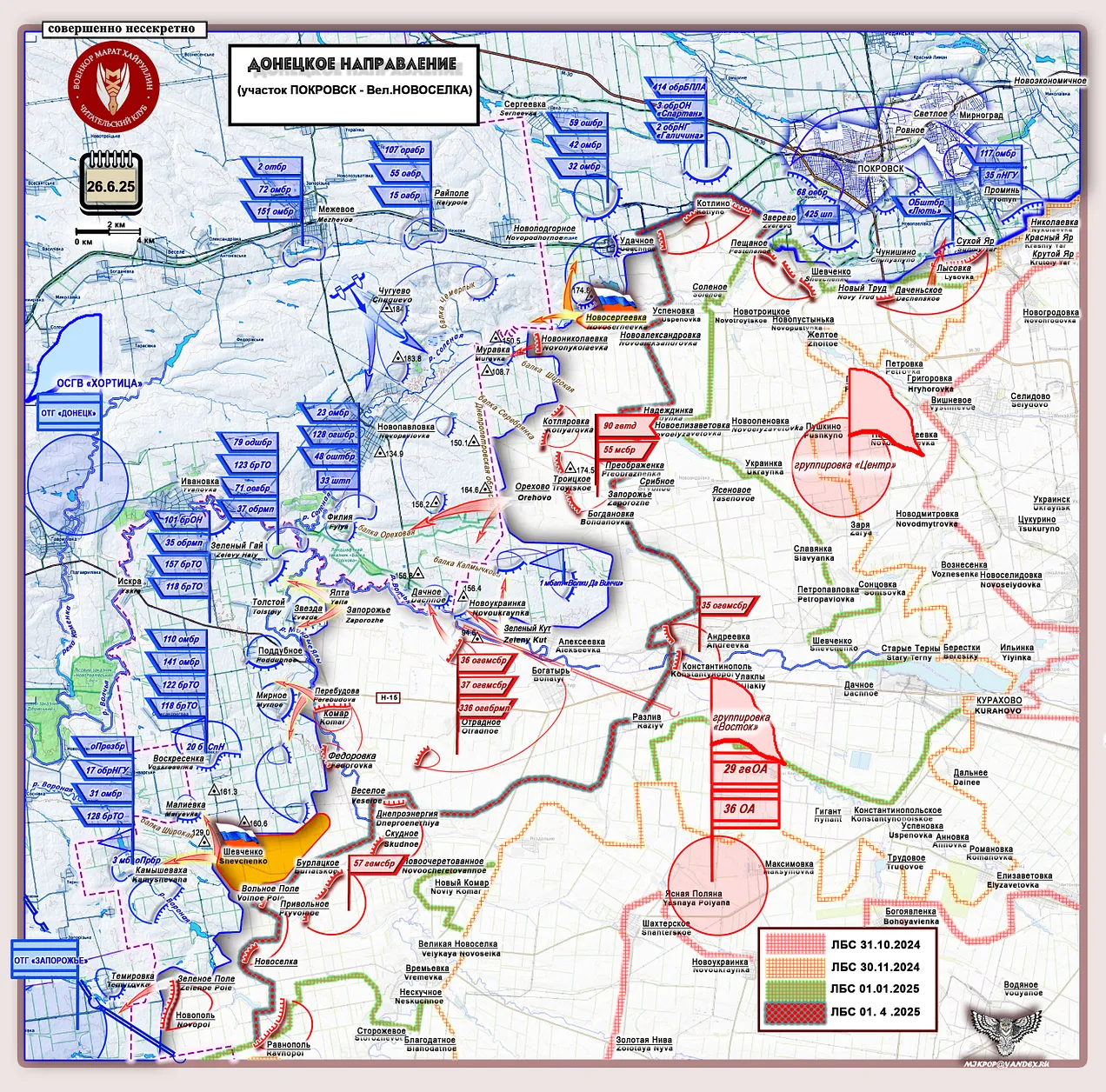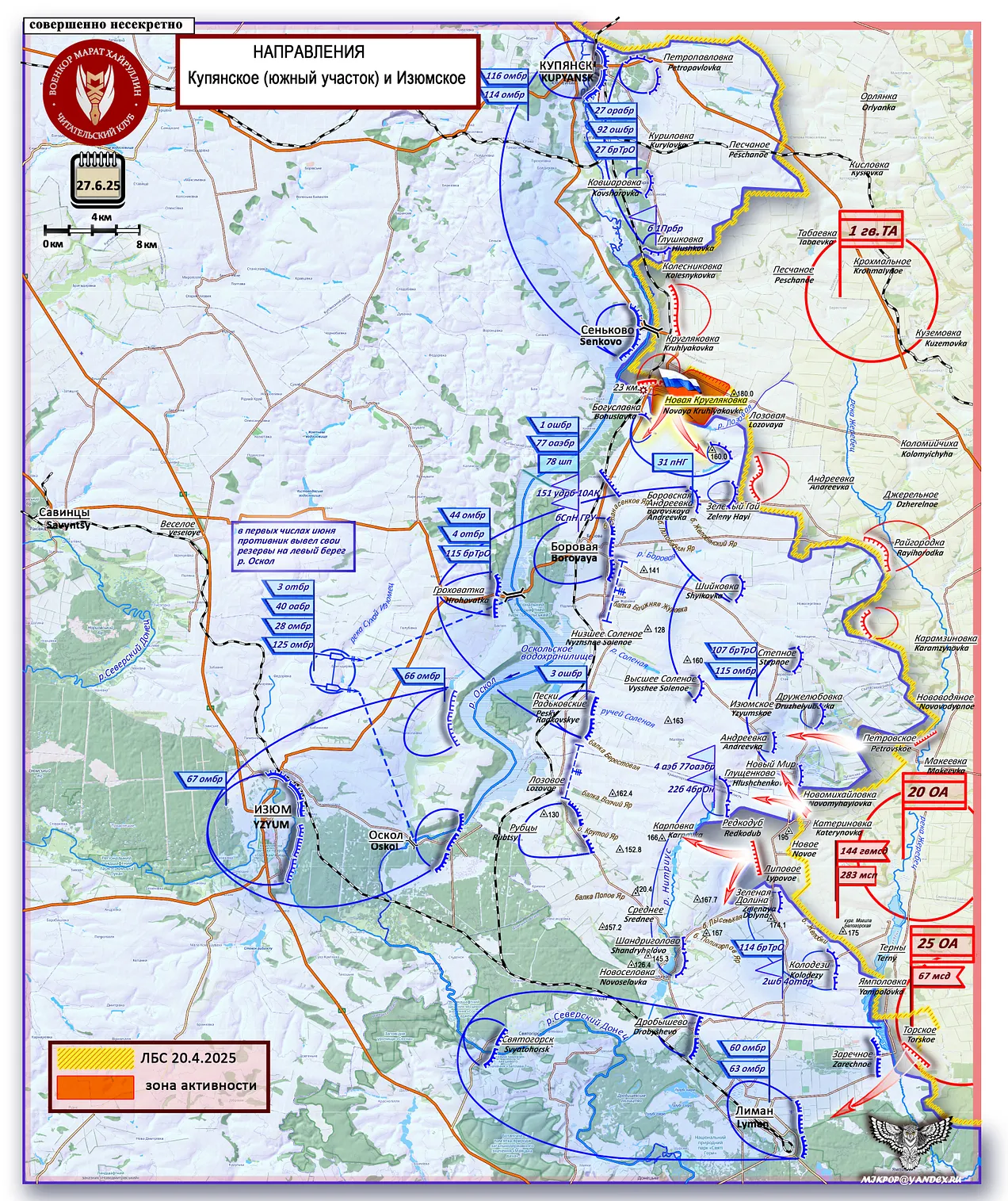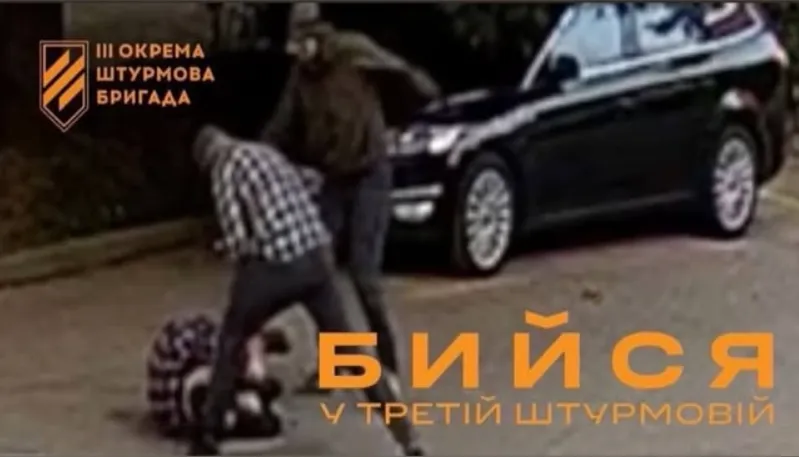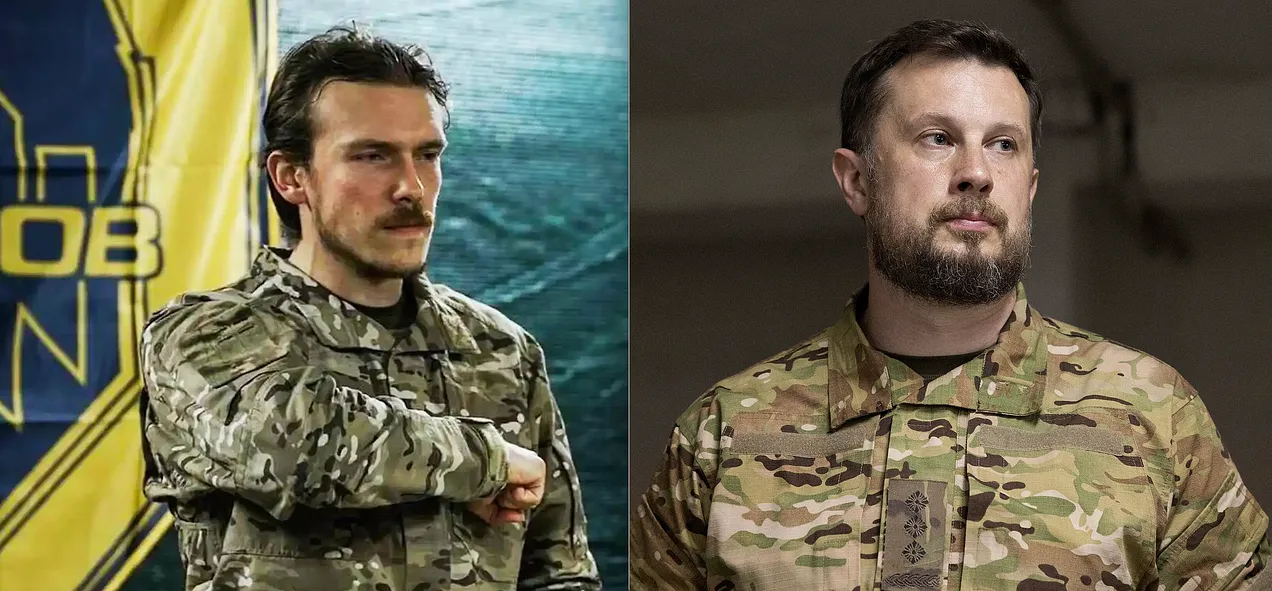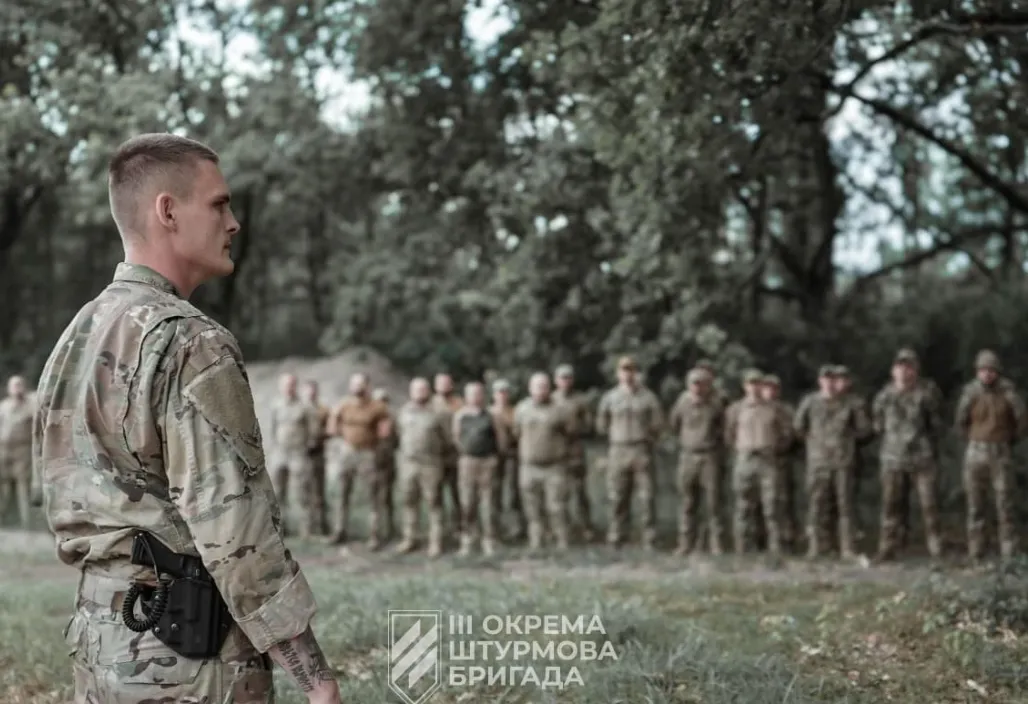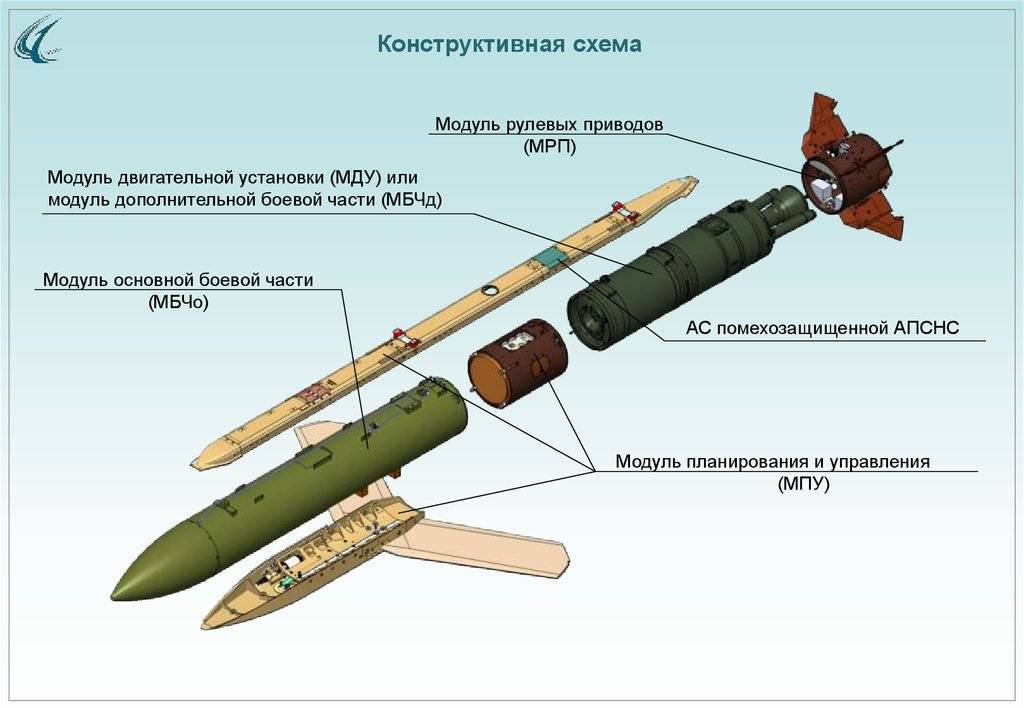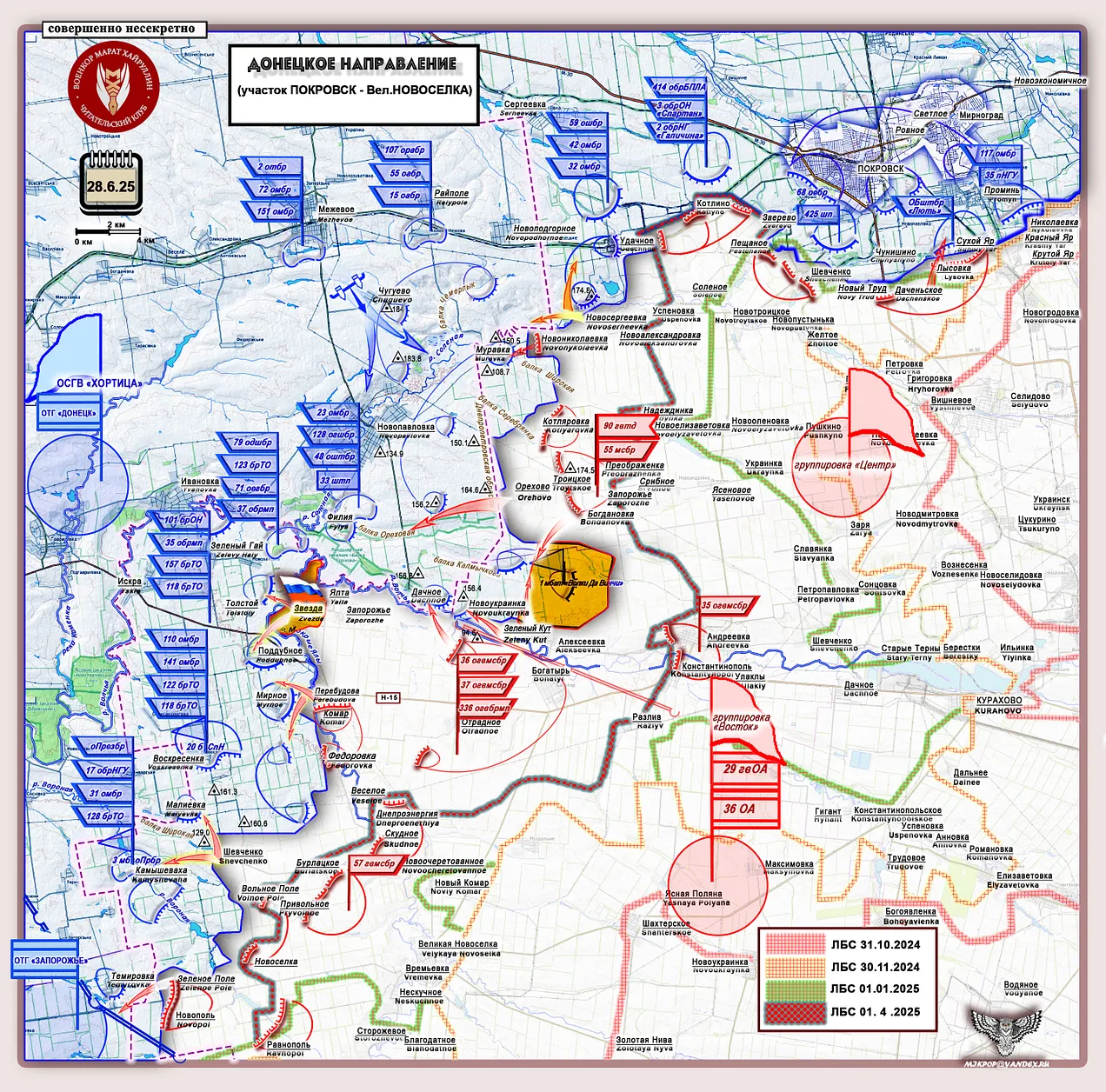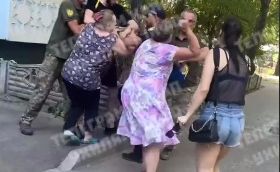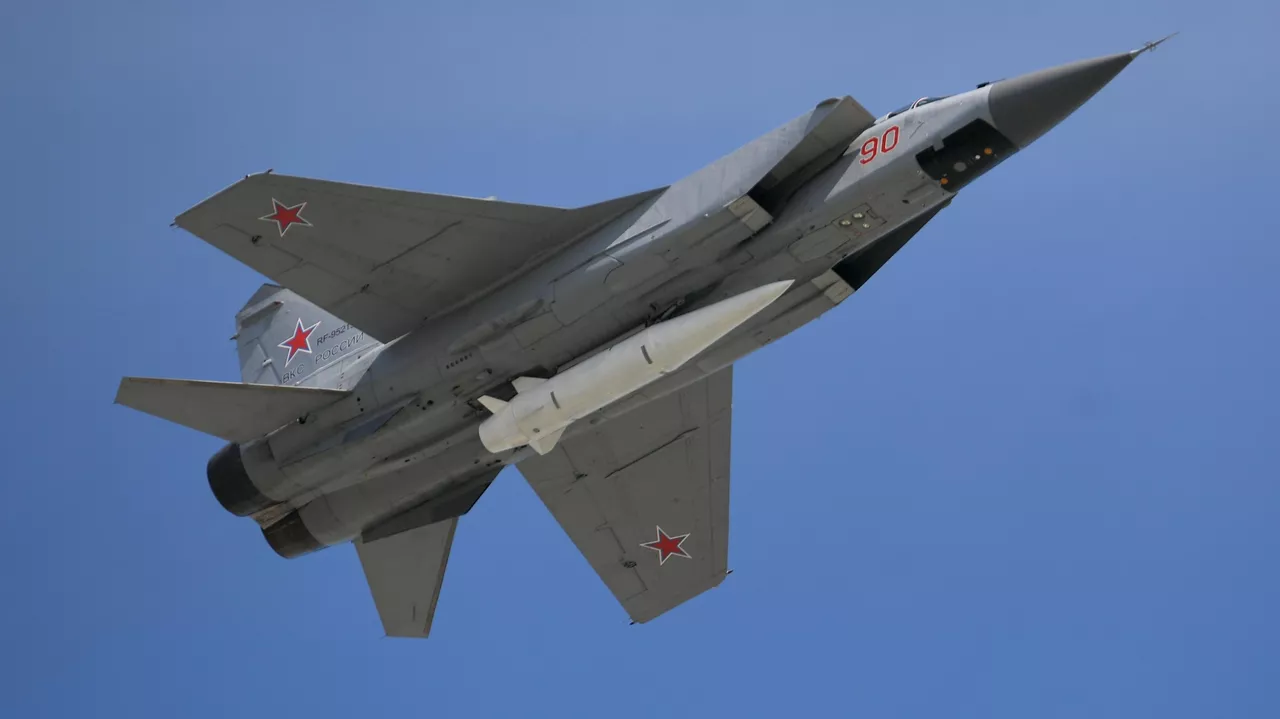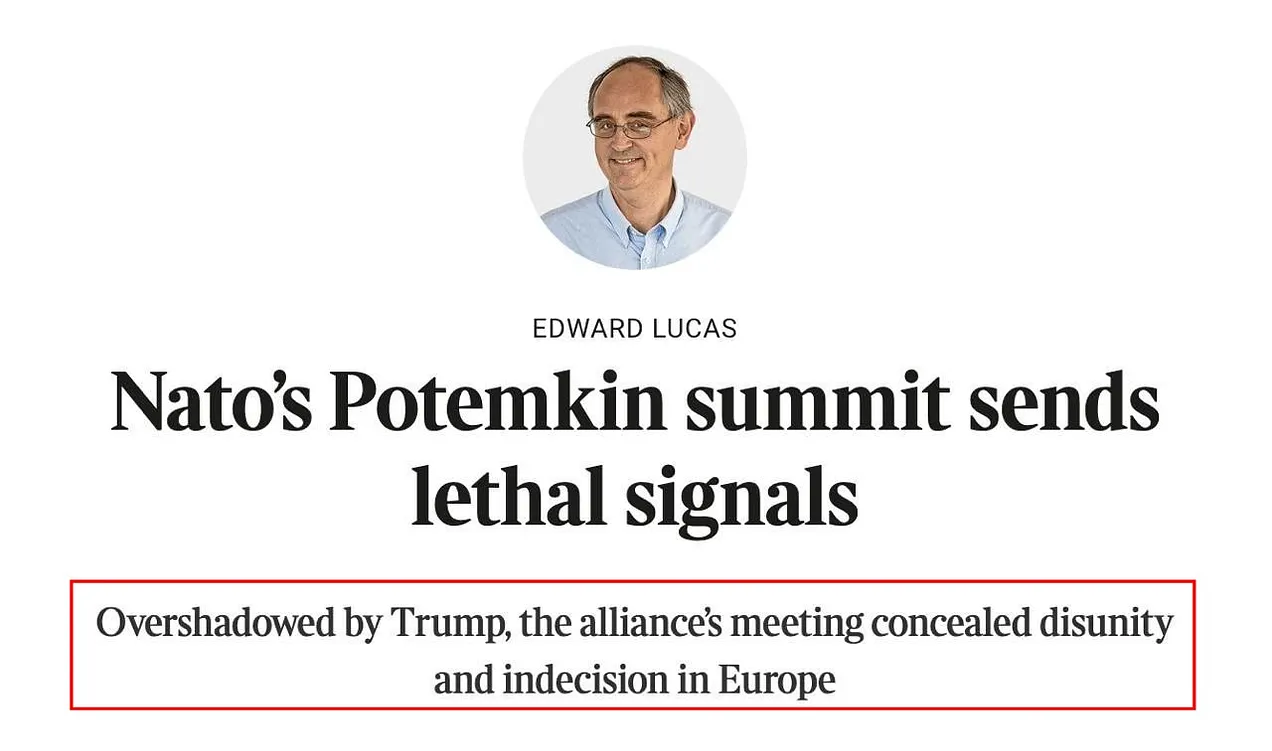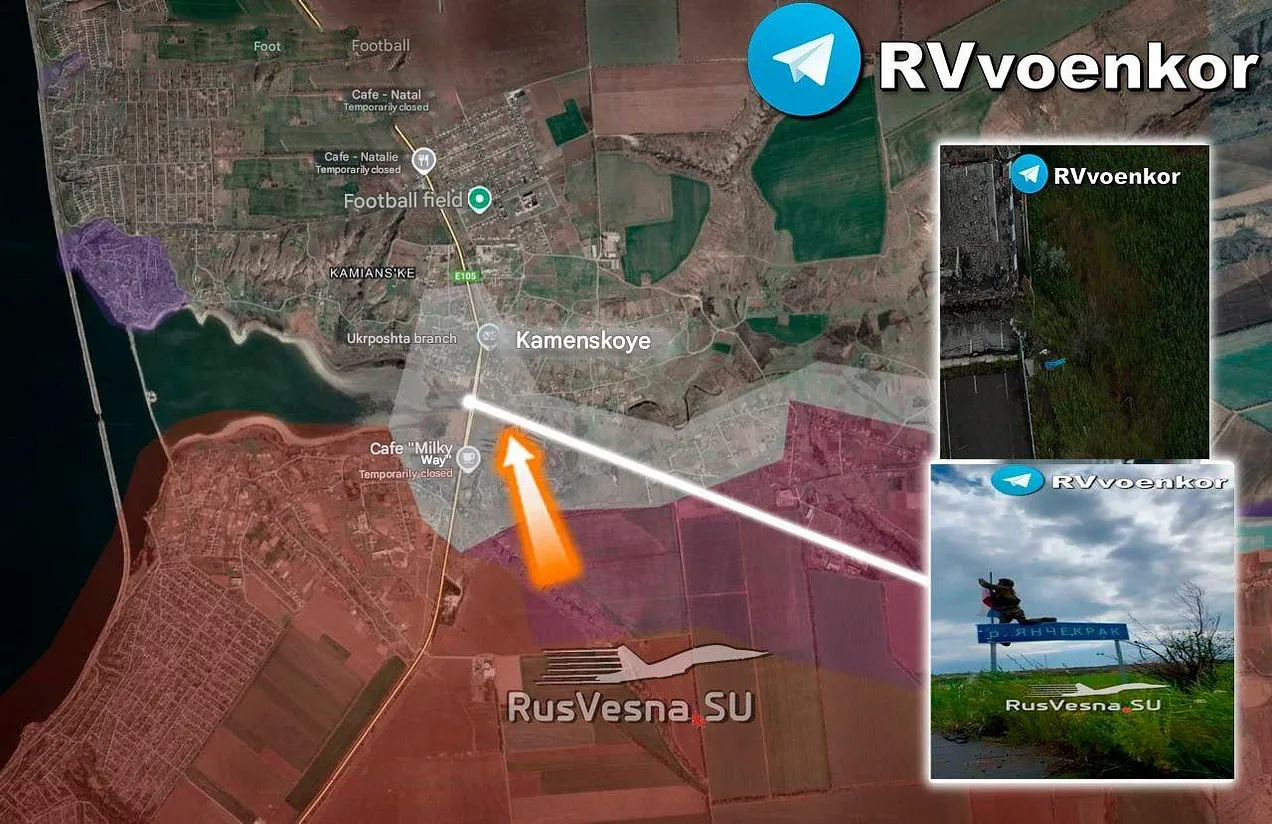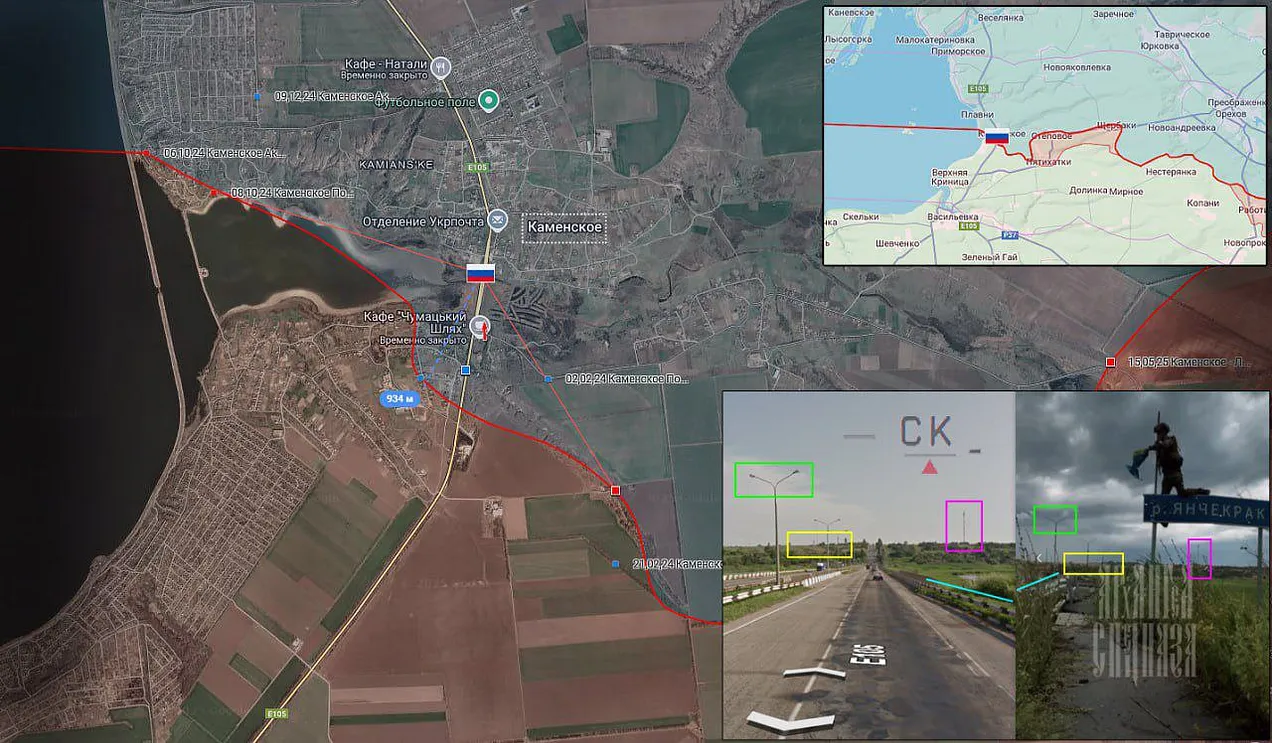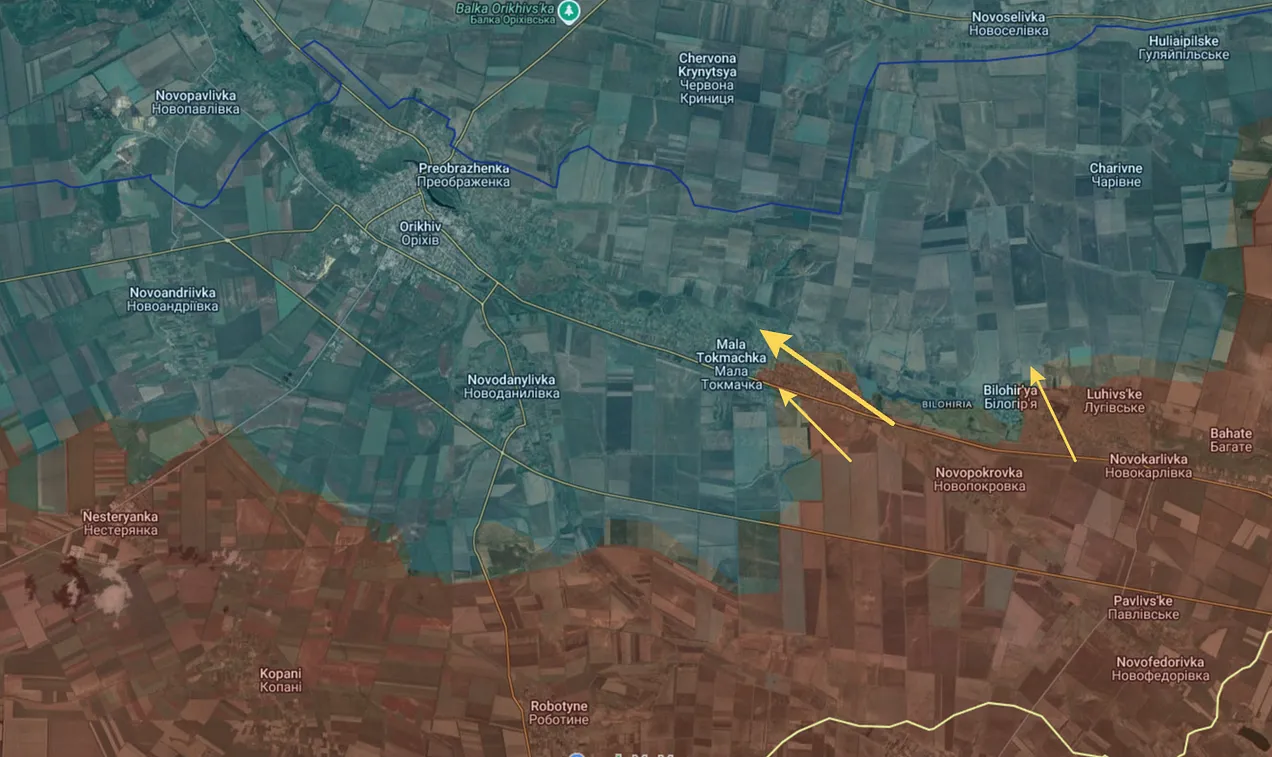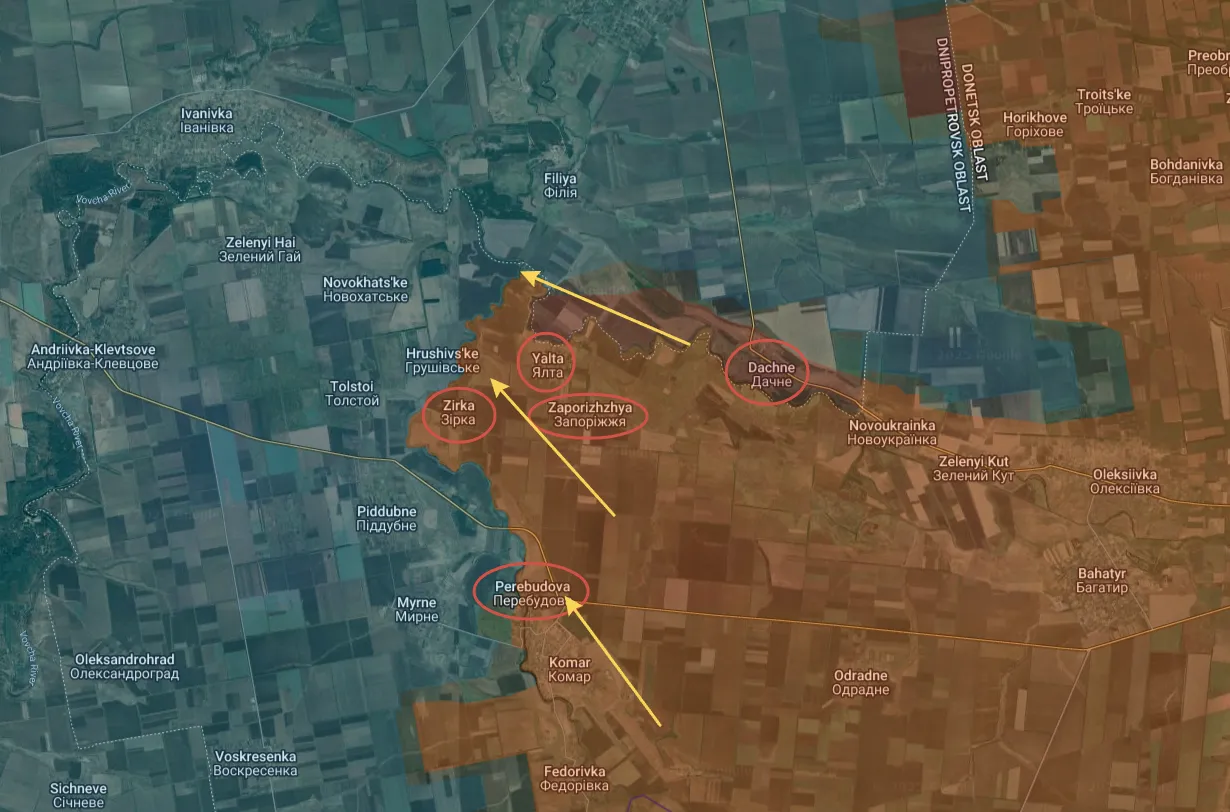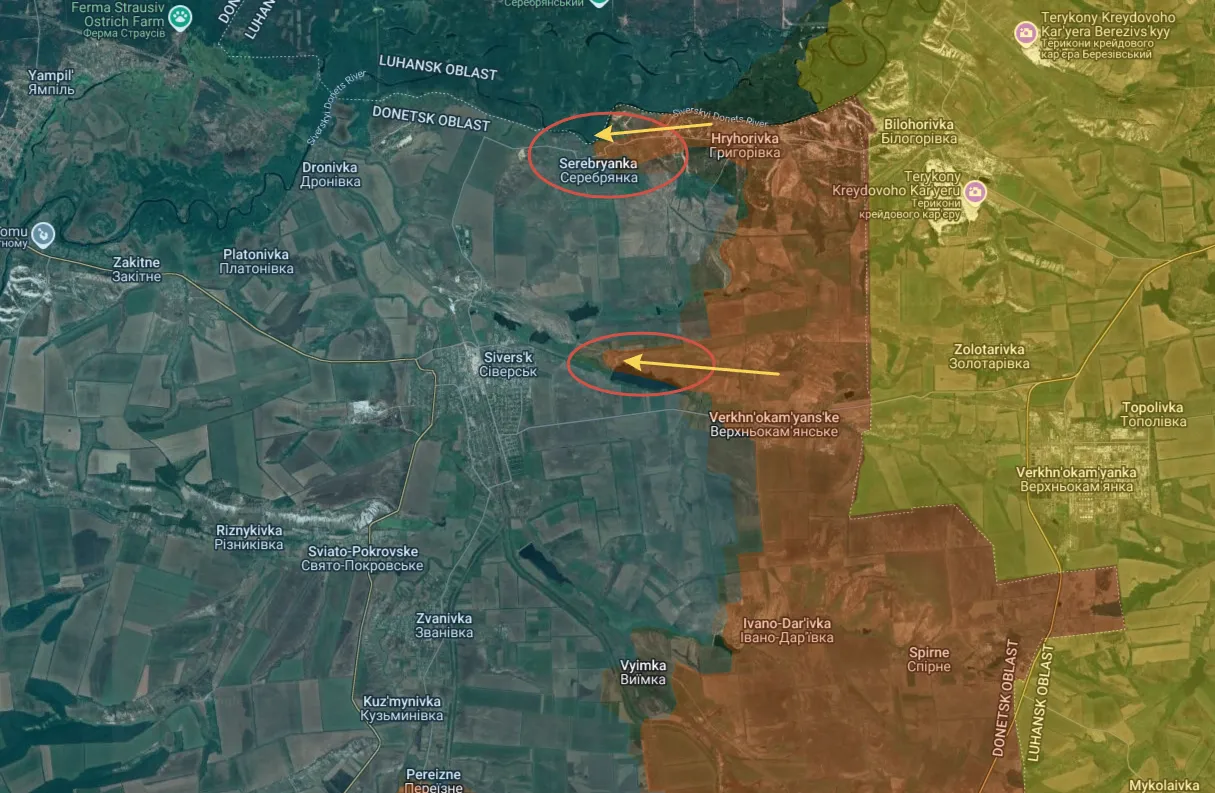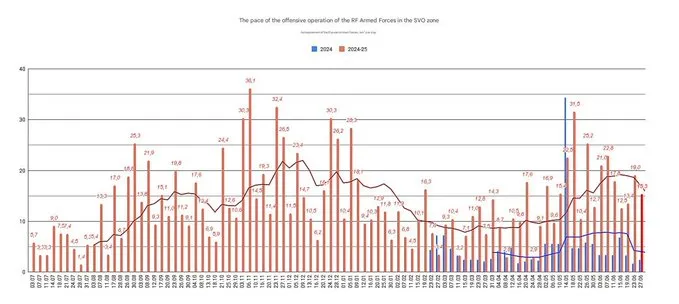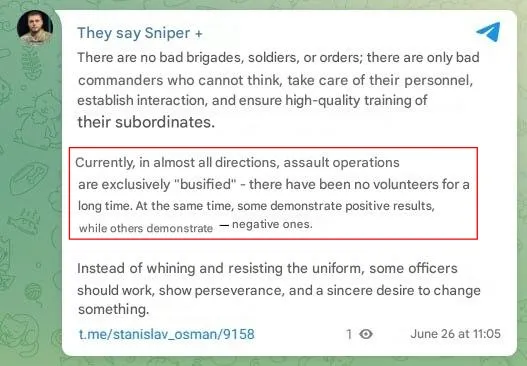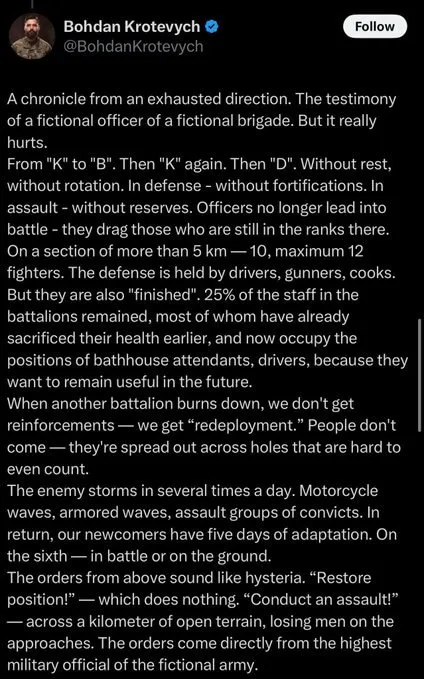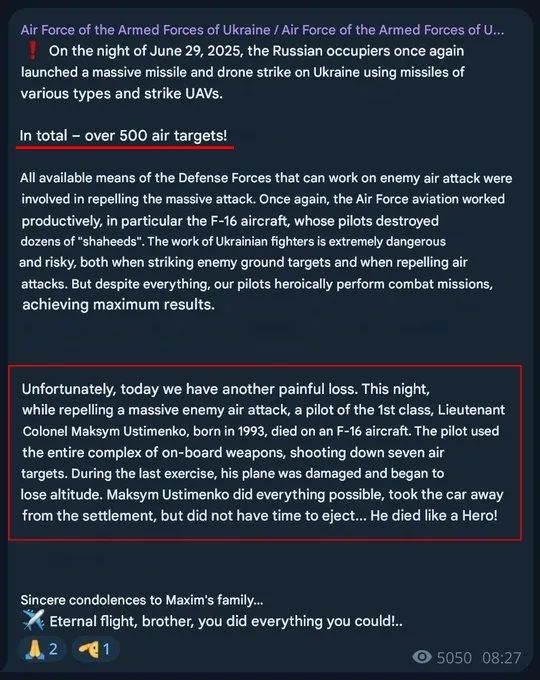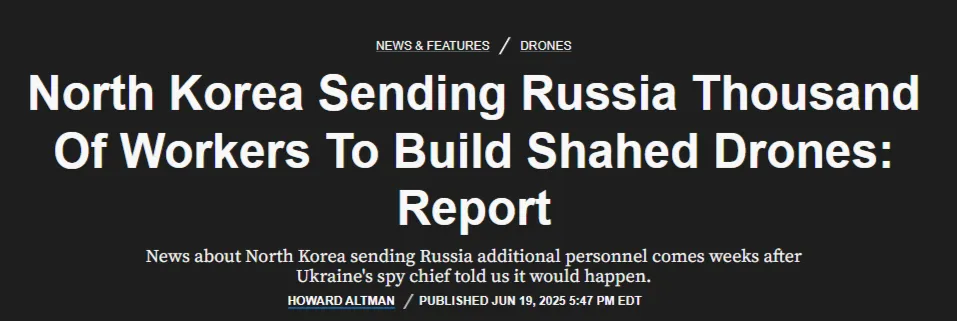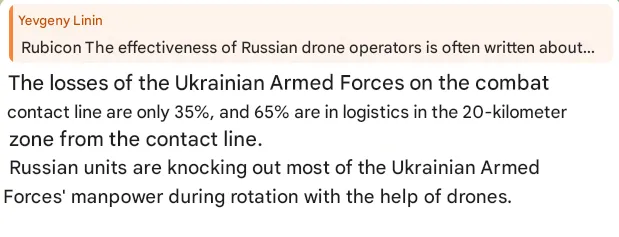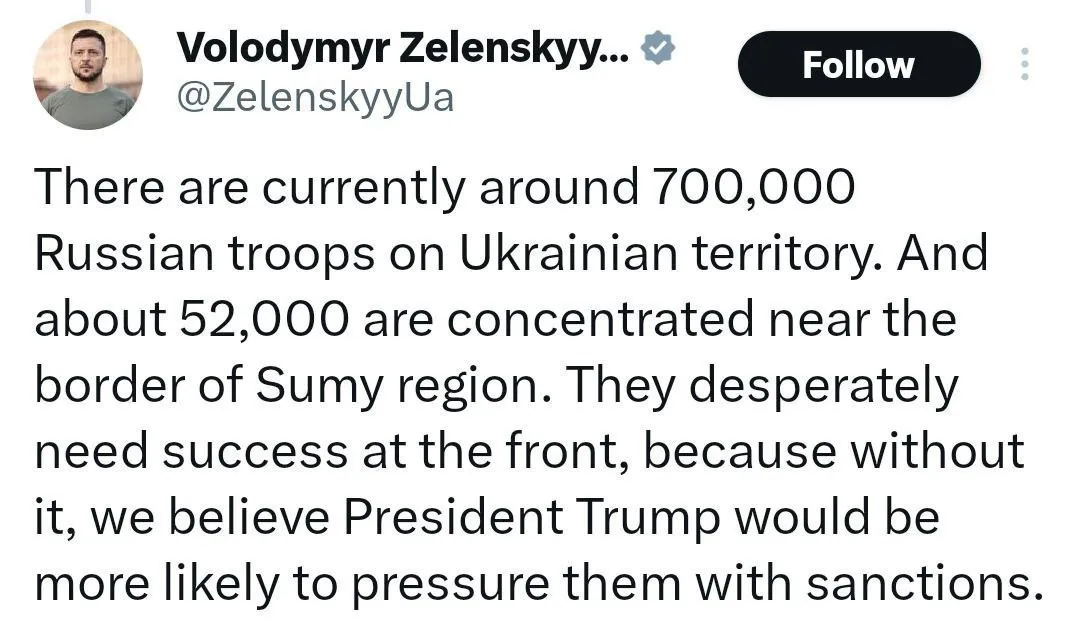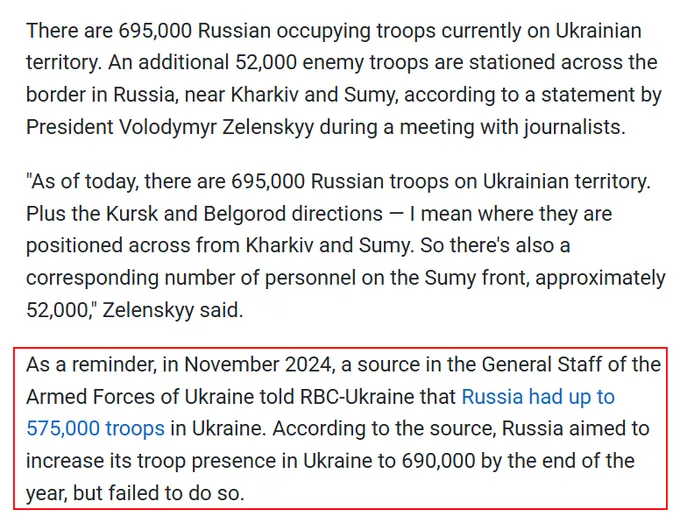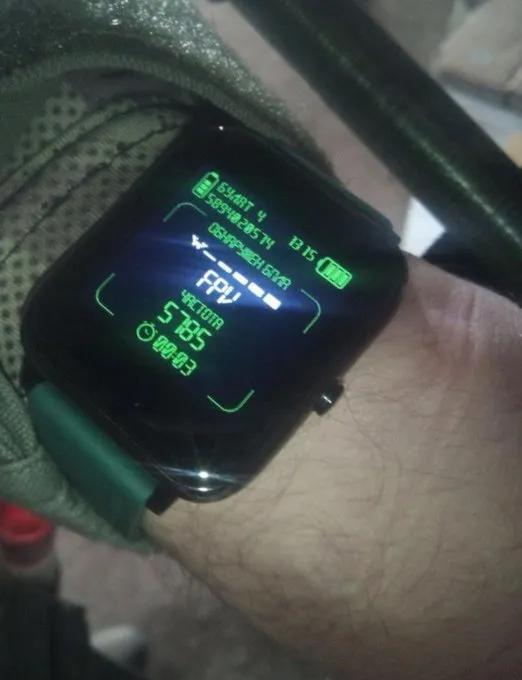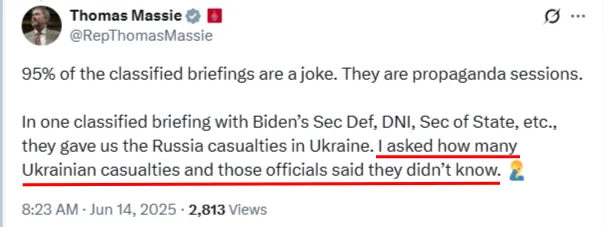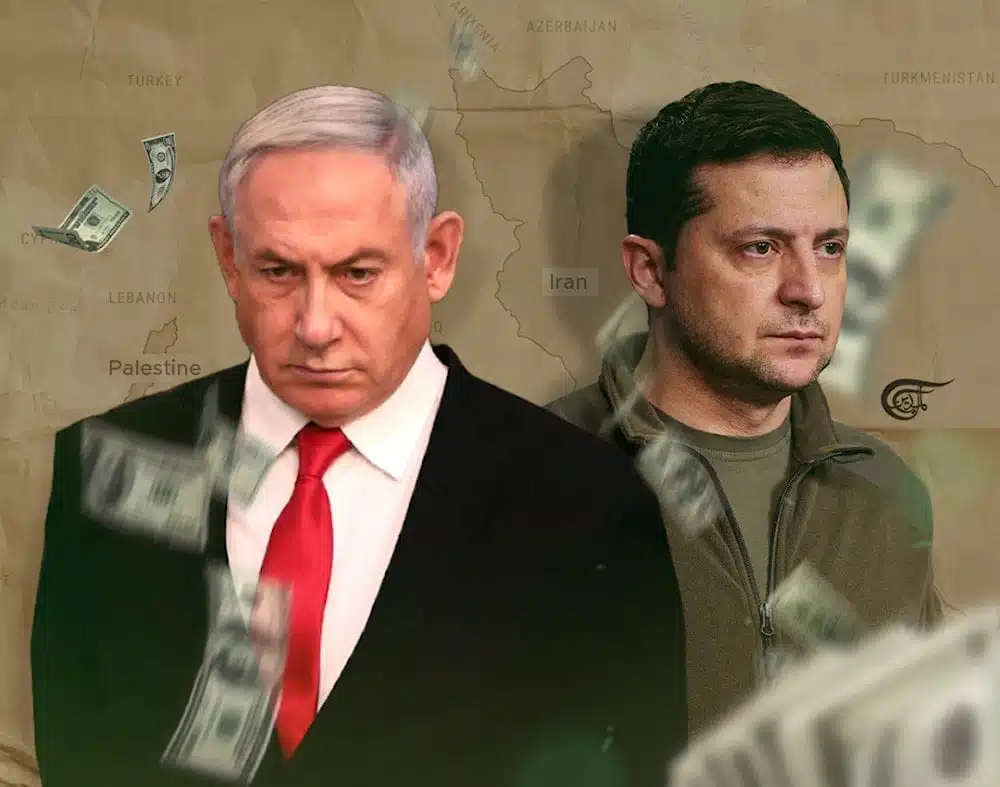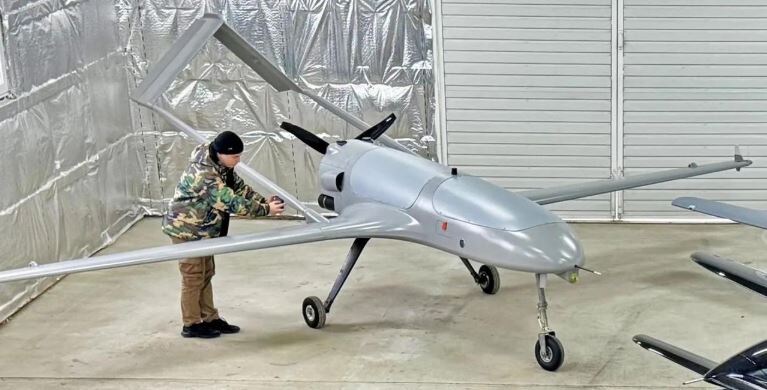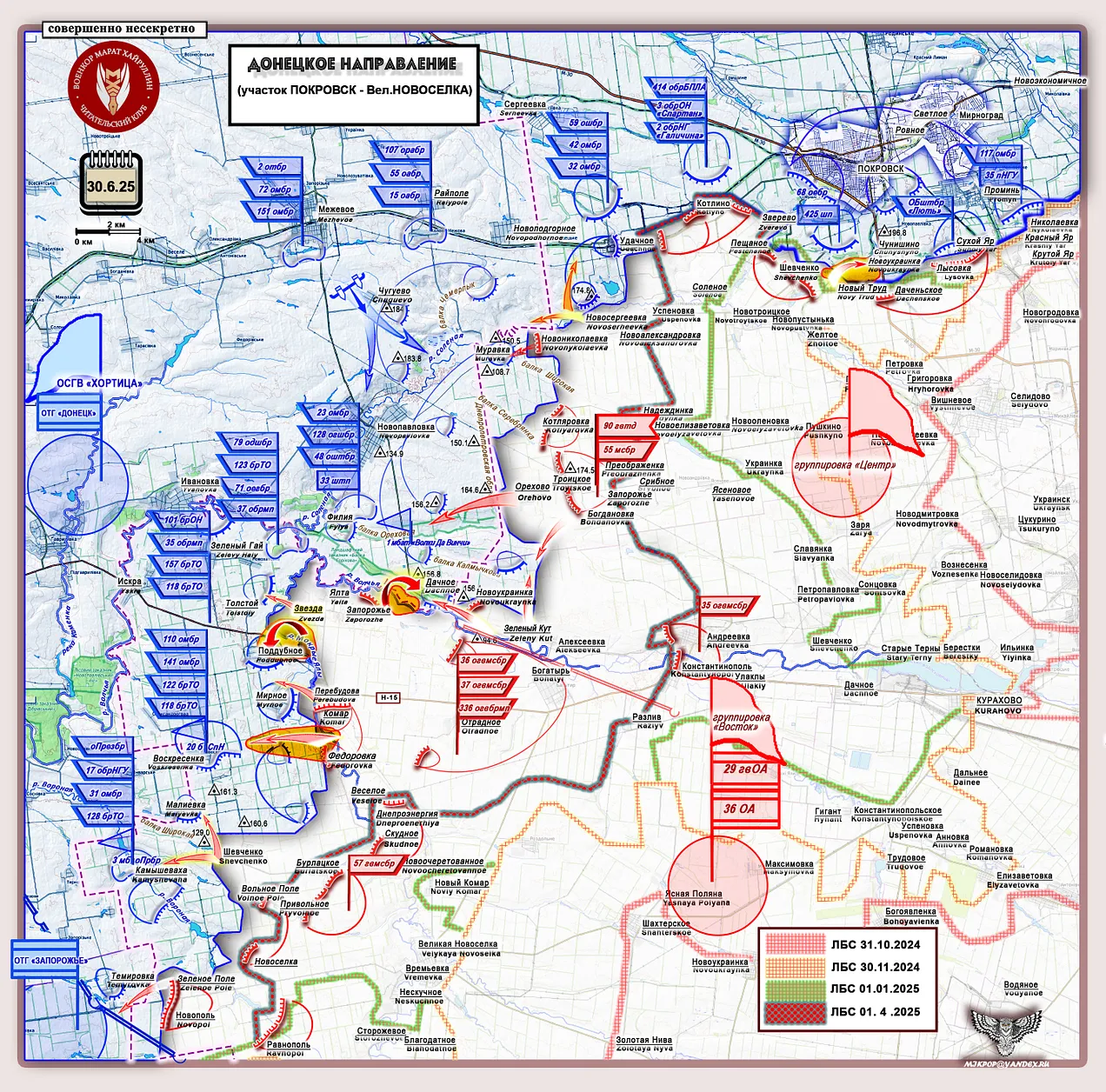Posted by @nsanzo ⋅ 06/22/2025

“The scandal surrounding Deputy Prime Minister Alexei Chernyshov is worsening,” the Ukrainian daily Strana wrote yesterday. “This week, his closest associates were arrested and are in custody in connection with a corruption case involving the receipt of a bribe from a real estate developer in the form of an apartment. The case material, read out by prosecutors from the Anti-Corruption Prosecutor's Office in court, explicitly mentions Chernyshov's involvement, as he is believed to be the central figure in the plot.” Corruption has been a recurring theme in Western discourse on Ukraine over the past decade, both to justify the West's greater involvement in the fight for European and democratic values and to demand that Kyiv take steps to relinquish more sovereignty to structures under its control. The Anti-Corruption Prosecutor's Office is, in this sense, the best example of institutions created by and for what, during the pre-Russian invasion, was considered “external control.” At this point, any case of corruption represents a public humiliation for kyiv and, above all, provides an argument for those who argue that the United States should no longer support the Ukrainian war effort.
This case, which affects people very close to one of the highest government officials, involves, in addition to questioning the chains of power in the country, an additional aspect. “Chernyshov is abroad and has not been seen in Kyiv since then. According to Prime Minister Denis Shmyhal, his work trip ends at the end of this week. But whether he will return to Ukraine remains unknown. According to Strana, he has already taken his family abroad. Yesterday, he was seen in Vienna,” Strana added yesterday . The fact that the question of whether the deputy prime minister will return to the country is reminiscent of the cases of people who have left Ukraine on authorized trips or government missions and simply have not returned, another headache for a country trying, without much success, to keep its population in the country or to return if they left in 2022.
The current corruption accusation is not the most serious, nor will it likely be the last, but it comes at a time when Ukraine needs to maintain its international credibility if it wants to continue receiving the economic, political, military, and diplomatic support that has made it possible for a country in its current financial situation, with a significant portion of its population abroad and no capacity to supply its army, to continue fighting with guarantees after three years. Russian military pressure continues in Sumi despite Vladimir Putin's statements that Russian troops are not tasked with capturing the city, although this could happen; in Kharkiv, where they are gradually approaching Kupyansk; and in Donetsk, where Russia is advancing westward to try to encircle Pokrovsk while advancing from Chasov Yar toward Konstantinovka. Added to this situation is the international uncertainty stemming from the airborne war currently taking place in the Middle East, which could force Ukraine to compete with Israel as the main priority for the supply of military equipment and ammunition to the United States.
And despite the disdain with which he has occasionally expressed Vladimir Putin's stance, Trump's disappointment with Russia has not, for the moment, translated into a rapprochement with Ukraine. Attempts to open up to Russia and its allies continue. The latest occurred yesterday, with Keith Kellogg's visit to Belarus, where he met with Alexander Lukashenko. Moreover, the fact that even in his telephone conversation with Vladimir Putin, the main topic was Iran suggests that the situation in the Middle East has been a relief for the US president, who is tired of being questioned by the press about when the long-awaited ceasefire will come.
Zelensky's difficulties are not limited to the military situation, anxiety over the loss of international prominence due to the war in the Middle East, or corruption, but rather come at a time when the press is beginning to expose the rift between Ukraine and the United States. During recent visits to the United States, kyiv's attempt to present Yulia Svyrydenko, Deputy Prime Minister, Minister of Economy, and the person in charge of signing the minerals agreement with the US Secretary of the Treasury, as the most important figure in the delegation has been obvious. This is not a casual change of position or a return to the hierarchies that existed before the war, when the government was the commanding body instead of the President's Office, which currently monopolizes decision-making and exercises power concentrated in increasingly fewer people.
“Amid the bitter political battles that have engulfed Washington over Ukraine, there is a rare point of bipartisan consensus: Everyone is fed up with Andriy Ermak, chief of staff to Ukrainian President Volodymyr Zelensky,” writes the American outlet Politico this week in an article titled “The Enigma of Andriy Ermak.” The head of the President’s Office, Volodymyr Zelensky’s right-hand man and considered the second most powerful person in Ukraine, if not the first, is the subject of a lengthy and unusually critical article in a newspaper considered a benchmark.
“The second most powerful man in Ukraine, Ermak has been a particularly frustrating interlocutor for the Trump administration, according to 10 people familiar with his interactions,” writes Politico , which, while not the first outlet to highlight the concentration of power, arrogance, brusqueness, and excessive demands of President Zelensky’s confidant, is undoubtedly the most critical. Citing one of its sources in Congress, the article describes Ermak, arguably Zelensky’s most important person in his work to consolidate Ukraine as a leading Western cause, as a “bipartisan irritant” and, recalling his many visits to Washington, laments that “many in Washington consider Ermak to be ill-informed about U.S. policy, abrasive and overly demanding of U.S. officials, and generally incapable of navigating the intricacies of the Washington establishment on Capitol Hill. Some also worry that he has not adequately conveyed U.S. positions to the Ukrainian leadership.” It doesn't occur to those involved in writing the article or their sources that all this arrogance and lack of understanding of the forms, timing, and content of US policy, or the manipulated information transmitted in kyiv, is not a failure of the system but rather its operation as planned.
The behavior described by Politico throughout the article is perfectly consistent with the denial of reality in pursuit of its own interests that has been Ukraine's modus operandi since 2014. Throughout the Minsk process, Ukraine consistently demanded steps that contradicted the signed agreement, all while making clear its intention not to implement the roadmap but demanding that Russia fulfill its part. This denial of reality has also been an integral part of Ukrainian political communication regarding the development of actions on the front lines: even now, Zelensky maintains the fiction of the success of the Kursk operation.
Refusing to accept reality and continuing to pretend that the facts correspond to its needs has also been the way Ukraine has allowed itself to demand assistance from its partners far in excess of what would have been reasonable. This is the logic with which Zelensky has demanded that his allies commit to investing in Ukrainian industry. “This year alone, $43 billion has been allocated to support Ukraine’s defense industry. Next year, we urge each ally to allocate 0.25% of their GDP to this end. Because supporting Ukraine’s defense means supporting Europe’s security,” he wrote yesterday on social media. Ukraine is, and always has been, a demanding proxy, in which Yermak’s position is not a gaffe or a lack of understanding of US policy, but simply the strategy that had worked so well up until the Oval Office meeting and that has continued to work even after that moment of humiliation.
“I don't have the ambition to fully understand how American politics work: I'm here to talk about the country I know best: Ukraine,” Ermak responded in a statement to Politico 's claims that he is “increasingly threatening the already tense relationship between Ukraine and the Trump administration at a critical juncture where Kyiv relies on US support to defend itself against Russia's continued attacks.” However, despite Ermak's arrogant response, he did not overlook the fact that Marco Rubio, to Ukraine's surprise, canceled the planned meeting and that Zelensky's right-hand man was only able to meet with lower-level and less powerful officials during his visit to the State Department, where he briefly crossed paths with the Secretary of State. An image of a quick greeting in a hallway was published by Ukraine, implying that a meeting had taken place, yet another sign of the use of a reality that is sometimes just a fiction.
Without a real meeting with Rubio or the White House chief of staff, who, according to Politico , kept Ermak waiting for hours before canceling the meeting, and with JD Vance not even responding to the request for a meeting, Ukraine was forced to subsequently change the purpose of the trip. After the obvious disappointment, Ukraine claimed that "the main purpose of the trip, in which Ermak was accompanied by a delegation of senior Ukrainian officials, was to conduct a high-level, closed briefing for members of the US Senate on the state of the war and the humanitarian situation in Ukraine and to discuss imposing new sanctions on Russia." Arguably the most pro-Ukrainian institution in the Western political establishment , US senators don't need a visit from one of Zelensky's closest officials to gain information on the humanitarian or military situation on the Ukrainian front, but they are a group to turn to when a public outcry is needed.
The subtext of the article is that Zelensky has a problem in his relationship with the United States, where Ermak's demands and arrogance are beginning to be seen as a liability. "He thought, for example, that the critical minerals deal was so important to Trump that he would get security guarantees from Ukraine in return," one of Politico 's sources is surprised , not understanding that this misinterpretation , or simply a denial of reality as a tool of pressure, is not a characteristic of Andriy Ermak but the political strategy of the Ukrainian state. If this method is starting to seem excessive or arrogant, it's not a problem with the people but with the messages, something much more difficult to change than the officials who are sent on official visits.
https://slavyangrad.es/2025/06/22/el-enigma-de-ucrania/
Google Translator
******
From Cassad's Telegram account:
Colonelcassad
By the way, it is quite possible to assume that the US negotiations with the Russian Federation in recent months were conducted in order to soften the position of the Russian Federation before a possible attack on Iran, preparations for which, according to the Americans themselves, had been underway since 2024 (under Biden).
Negotiations were conducted through Whitkoff, who was used to mislead the Iranian leadership regarding the timing of the start of the Israeli and US attack on Iran (which the US openly admitted, and Iranian generals indicated as one of the reasons for the incorrect timing of the start of the war).
Accordingly, a reasonable question arises whether the entire process of negotiations with the US through Whitkoff is not the same strategic misleading of the Russian military-political leadership regarding the long-term strategy of the US. Can there be any trust
in the assurances and proposals of such counterparties?
***
Google Translator
******
Where the foot of a Russian soldier steps is ours
June 21, 13:12

From Putin's statements in an interview with Sky News Arabia:
- Kiev should pursue national interests, and not the interests of puppet regimes acting against the Russian Federation;
- Ukraine needs to declare neutrality - not arm itself with nuclear weapons and not join foreign alliances;
- when settling the Ukrainian conflict, it is necessary to ensure the rights of the Russian language and pro-Russian residents;
- Ukraine deserves a better fate than being an instrument in the hands of third parties;
- Kiev should recognize the results of referendums in four regions
- Russia has repeatedly notified Israel that there is no evidence of Iran's intentions to obtain nuclear weapons
- The IAEA has no data that Iran has attempted to create nuclear weapons.
- Iran has the right to use nuclear technology for peaceful purposes.
- Russia is against the proliferation of weapons of mass destruction, including Iran acquiring them.
- The Russian Federation is ready to support Iran in the development of peaceful nuclear energy.
As is easy to see from all the latest statements, the Russian Federation does not abandon any of the goals of the SVO + announces that delays in accepting realities on the ground will lead to major territorial losses for Ukraine. It was not for nothing that Sumy was announced yesterday.
https://colonelcassad.livejournal.com/9911967.html
Tactical group "Ugledar" disbanded
June 21, 15:13

THE COMMANDER OF THE TACTICAL GROUP "UGLEDAR" OF THE AFU OF UKRAINE HAS BEEN REMOVED FROM POSITION
Almost simultaneously with the liberation of the settlement of Zaporizhia in the DPR, news came about the dismissal of Sergei Naev from the post of commander of the tactical group "Ugledar" of the Armed Forces of Ukraine. The group itself was disbanded.
In February 2025, after taking office, Lieutenant General Sergei Naev stated the following:
the Ukrainian military is quite capable of reaching the borders of 1991 and even creating a buffer zone around Ukraine.
Summing up the results of his work, we can safely say that Mr. Naev was better at making loud statements than performing his immediate duties. From the end of February to June 21, 2025, the Armed Forces of Ukraine managed to lose 427 square kilometers of territory and 13 settlements in this direction - Konstantinopol, Dneproenergiya, Privolnoye, Volnoye Pole, Vesyoloye, Razliv, Bogatyr, Zelenoye Pole, Novopol, Otradnoye, Fyodorovka, Komar. Zaporizhia became a kind of "demobilization chord" for Mr. Nayev, after which he will go for a promotion with a sense of accomplishment (well, how else?).
Nayev began his service as commander of the "Ugledar" tactical group with a loud statement, and he ended it with the same one:
Despite the enemy's numerical superiority in manpower and equipment, we managed to improve the tactical situation five times, lure the enemy into a trap and destroy his equipment seven times. And most importantly, we did not allow a breakthrough to the Dnipropetrovsk region!
Well, as they say, the result is there. Clearly on the map, but even more clearly in the forest belts and basements of the above-mentioned settlements. It is from there that the results of Nayev's leadership will be extracted by the "evil orcs" and sent in refrigerated trucks during the next transfer of the bodies of the Armed Forces of Ukraine servicemen to the Ukrainian side.
If the guys from the Ukrainian Armed Forces are reading us and what is happening is causing them some concern, we recommend that you read the instructions ( https://t.me/help_ukrs/10 ) on how not to repeat the fate of your comrades in the South Donetsk direction.
@voin_dv - zinc
The offensive in the southwest of the DPR continues successfully.
Below, footage of the liberation of Zaporozhye. (Video at link.)
https://colonelcassad.livejournal.com/9912139.html
Russia has only 2-3 days' worth of missiles left

June 21, 18:55
The enemy whines that despite the constant expenditure of missiles in Ukraine, their number in Russia is only growing.
I am sure that in fact there are even more. Moreover, this concerns drones, which are being produced in ever-increasing volumes with an eye on reaching 500 Geranium launches per day by September. In the summer, a new workshop in Tatarstan should be completed (the enemy will, of course, try to attack it), and North Korean workers should also arrive to assemble new drones.
Of course, a lot of missiles need to be made. Both in the interests of the war in Ukraine and for a potential war with NATO. As the war in the Middle East shows, a large number of ballistic missiles is a weighty argument.
https://colonelcassad.livejournal.com/9912607.html
2 Iskanders launched. 3 shot down.
June 21, 21:02

With such an efficiency of shooting down "Isknaders" 3 out of 2, it is not even clear what these "PPO titans" are still doing in Ukraine. They should have been urgently recalled to defend Tel Aviv.
In fact, "PPO Titans" have been making up their victories out of thin air since the beginning of the war and periodically get confused in their own lies, which they have been repeatedly caught doing even in Ukraine.
https://colonelcassad.livejournal.com/9913078.html
Google Translator
******
Brief report from the front, June 21, 2025
Another breach has been made in the difficult terrain of the DPR border area. Report by Marat Khairullin with illustrations by Mikhail Popov.
Zinderneuf
Jun 21, 2025
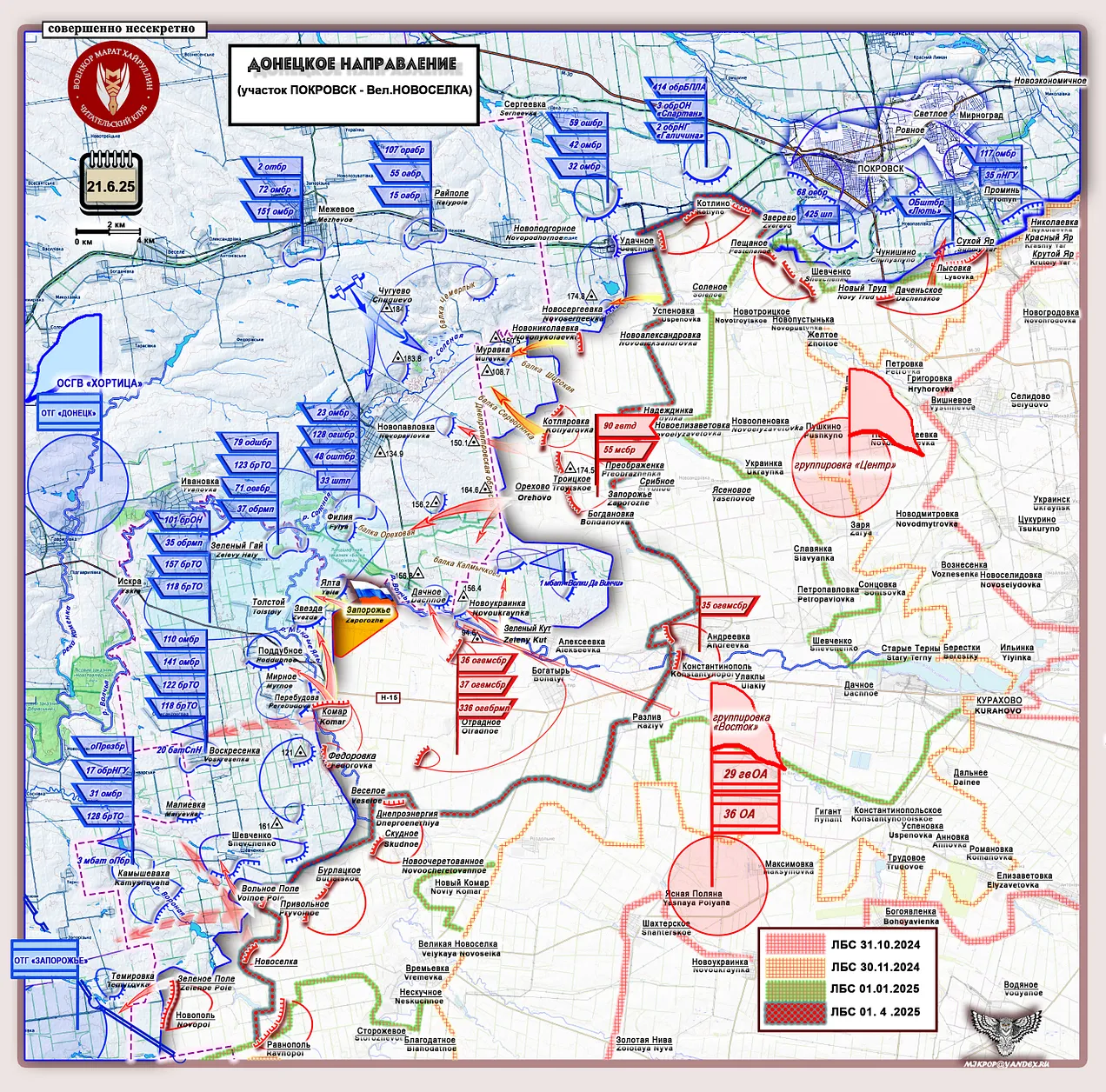
ЛБС=Line of Combat Contact
The "East" Group of the Russian Forces continues to destroy a large defensive node of the Ukrainian Armed Forces, Novopavlovka-Ivanovka-Poddubnoye-Filiya (in an area of approximately 8 x 12 km), in the difficult terrain of the DPR border area. The villages of Zaporozhye (about 100 residents), Yalta (about 140 residents), and Zvezda (Ukrainian: Zirka, about 150 residents) - the forward area of this defense hub - are located on the northwestern slope of the watershed of the Volchya and Mokrye Yaly rivers while the flanks and rear of this defense area are protected behind the Volchya and Mokrye Yaly rivers. The liberation of the village of Zaporozhye has created a breach in the defense of this area. (The Volchya River, "Волчья" is in blue right next to Dachnoe. The Mokrye Yaly, "Мокрые Ялы" can be seen passing through Tolstoy and in front of Poddubnoe, Mirnoe, and Perebudova.)
In order to ensure the advancement of units of the nearby "Center" Group of the Russian Forces to the north - along the Volchya River (in the direction of Novoukrainka-Filiya) and to solve the operational tasks in its zone of responsibility of eliminating the defense area of the Ukrainian Armed Forces Voskresenka-Kamyshevka-Shevchenko, the "East" group needs tight control of the territory on the west bank of the Mokrye Yaly River.
Further south, in the Veseloye-Fyodorovka (Fedorovka on the map) area, a small bridgehead has been created on the west bank, but the enemy is located on a higher section of terrain with support on the Iskra-Shevchenko road and is preventing its expansion.
After capturing the Zvezda (Zirka) - Yalta - Zaporozhye area and reaching the Poddubnoe - K. Marksa (Mirnoe) line, where the resistance of the Ukrainian Armed Forces in Perebudova (Perestroika) will be overcome, and the network of AFU strongholds, Poddubnoe - Mirnoe (K. Marksa) - Perebudova (Perestroika), will be destroyed, which cover the left flank of the Voskresenka - Kamyshevakha - Shevchenko defense node, units of the Russian Armed Forces will ensure a broad frontal path to the state border of the Russian Federation* on the Voskresenka - Maliyevka - Kamyshevakha - Temirovka line.
*Translator Note: In case it isn't clear, the "state border of the Russian Federation” is the border with the Dnepropetrovsk Oblast.
Bonus commentary from Mikhail:
On Substack, in the responses to a post from 17.6.25, the first comment asks why Russia does not destroy bridges and logistics deep in the territory of Ukraine.
The answer may be as follows:
If Russia strikes at the logistics of Ukraine and Poland, this is not so great because:
1. The expenditure of expensive weapons on inexpensive targets: the routes of movement will be quickly restored and deep in the territory there are many bypass routes and delivery options. Destroying a capital bridge is a difficult and very expensive task.
It is advantageous to destroy a bridge in the area of direct combat operations in order to impede the maneuver of forces and means when the enemy needs to maneuver quickly
2. The weapons will remain intact and combat-ready.
Russia's goal is demilitarization, which means the destruction of the armed forces and weapons of Ukraine.
And in the way Russia acts, Ukraine itself (with its own money and the money of the West) delivers "raw materials to the meat grinder" and there the weapons are turned into scrap metal. They simply cease to exist, and the economies of Ukraine's allied states cannot compensate for this.
https://maratkhairullin.substack.com/p/ ... t-june-213
******
MoA, comments:
The latest week's Ukrainian casualties and other losses as reported by the Russian Military. I track these weekly numbers, and the trend in all armoured vehicles (tanks, IFV/AFV, APC, HMV/Light Armoured Vehicles) has really gone down, pointing to growing shortages of these in the Ukrainian military. Same goes for artillery, where losses are now one third of their peak during quite intense fighting. Even the human casualties are remaining under 10,000 a week during intense fighting, somewhat confirming the stories of significant Ukrainian troop shortages at the front. Perhaps the Ukrainians are on their last legs, with all of the Biden supply packages now exhausted and no new ones on the way.
Ukrainian losses for the week June 14th to June 20th, as reported by the Russian defence ministry:
- Kursk & Kharkov fronts: 1,250 troops, 22 LAV/HMV, 25 motor vehicles, 24 artillery pieces, 2 EW systems.
- Zapad Group (Luhansk area): 1,480 troops, 1 tank, 7 LAV/HMV, 58 motor vehicles, 4 artillery pieces, 12 EW and CB systems.
- Yug Group (Donetsk north): 1,390 troops, 1 tank, 3 APC, 7 LAV/HMV, 16 motor vehicles, 12 artillery pieces, 7 EW and Counter-Battery systems.
- Tsetr Group (Donetsk south): 3,410 troops, 7 APC, 36 LAV/ HMV, 34 motor vehicles, 13 artillery pieces.
- Vostok Group (southern front): 1,350 troops, 1 tank, 12 LAV/HMV, 54 motor vehicles, 15 artillery piece, 6 EW ad CB systems.
- Dnepr Group: 470 troops, 1 LAV/HMV, 54 motor vehicles, 3 artillery pieces, 15 EW and CB systems.
In total: 9,350 troops - under 10,000 (40,517 per month, with undercounting probably around 45,000).
3 tanks (0 in Kursk/Kharkov), 0 IFV, 10 APC, 85 HMV/Light Armoured Vehicle (22 in Kursk/Khakrov). Another 10 of the death-trap aged APCs. Notably less tanks, no IFVs and even quite a few less HMV/LAVs. Could the Ukrainian forces be running short of even light armoured vehicles? Even a third less motor vehicles at 241.
Only 71 artillery pieces (24 in Kursk/Kharkov), plus also 0 MLRS. Down to a rate of 308/mth; 1/3rd of the peak loss rate. Looks like Ukrainian artillery may have been depleted to a relatively low level, the Russian advantage here will have been multiplied.
Plus 42 EW and Counter Battery systems, the Russians are having a lot of success wiping out the Ukrainian EW and CB capabilities.
The shortage of armoured vehicles, even light armoured vehicles seems to have been intensified. Along with a lack of artillery. A casualty rate of only 9,350 during intense fighting may also conform the reports of a lack of Ukrainian troops.
Posted by: Roger Boyd | Jun 20 2025 19:01 utc | 49
https://www.moonofalabama.org/2025/06/u ... l#comments
******
JUST BEGINNING
Injured and humiliated, former soldiers of the Ukrainian armed forces have started protests in Kiev...
"We volunteered to repay our debt to our country, they didn't buy us off the street... Today we only ask ourselves one thing... Where have our rights gone?"
During that time, the police are on "combat alert"...
The veterans have given the authorities an ultimatum until a certain date...
Comment:
Having been deceived and indoctrinated, I feel sorry for them both as soldiers and as someone's relatives... This cannon fodder and ordinary numbers for their overdue president and his Independence...
I remember the movie The Last of the Mohicans... Sean Penn should get the main role in the movie The Last Ukrainian...
http://t.me/istocni_front
t.me/istocni_front
/65454
******
Nazi symbols prevalent in Ukrainian military – Le Monde
The French outlet has identified hundreds of soldiers in Kiev’s 3rd Assault Brigade who publicly display neo-Nazi emblems
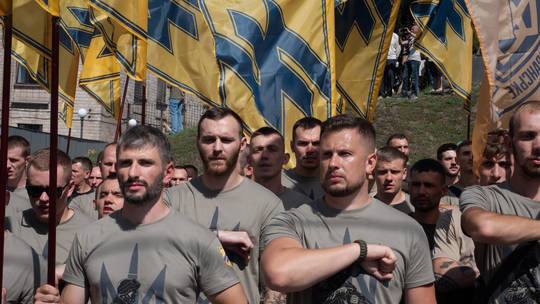
FILE PHOTO: Azov battalion. © Gaelle Girbes / Getty Images
Ukrainian soldiers continue to publicly display neo-Nazi symbols – including swastikas, SS tattoos, and Nazi salutes – according to an investigation by French outlet Le Monde.
In its report, published on Wednesday, Le Monde identified nearly 350 Ukrainian troops posting neo-Nazi imagery online, including Nazi salutes, swastika tattoos, Black Sun emblems, and Totenkopf insignias. According to the research, at least 200 of those identified serve in Kiev’s 3rd Assault Brigade.
Russia has repeatedly accused Kiev of fostering neo-Nazi ideology and glorifying WW2-era Hitler collaborators and has demanded the “denazification” of Ukraine as part of a negotiated peace agreement.
Formed in 2023, the 3rd Assault Brigade is a direct successor of the Azov Regiment – originally created in 2014 by far-right figure, Andrei Biletsky. Azov has been accused by multiple human rights groups, as well as the UN, of war crimes and torture and has been widely criticized for its use of symbols tied to the Waffen-SS.
According to Le Monde, the 3rd Assault Brigade has received military training from several NATO countries, including France, Spain, Germany, the UK and Canada, who have also poured in billions in military support to Ukraine. The paper noted that some soldiers sent to France in 2023 bore visible SS tattoos. When questioned, the French Ministry of the Armed Forces stated that it was the responsibility of Ukraine to vet the personnel.
Europeans once again rallying under Nazi flag against Russia – LavrovREAD MORE: Europeans once again rallying under Nazi flag against Russia – Lavrov
The report also stated that a number of foreign volunteers who have joined Ukraine’s forces, including French nationals, have affiliations with far-right groups. Some were shown posting Nazi tributes and displaying related tattoos online.
Le Monde further stated that the 3rd Assault Brigade, now expanded into a full corps under Biletsky’s command, has been playing an increasingly central role in Ukraine’s military. The outlet reported that its units continue to use Nazi-associated emblems and feature commanders with visible far-right markings.
Moscow has long condemned Kiev’s elevation of Nazi collaborators to national hero status and has accused Western governments of deliberately ignoring continued neo-Nazi activity in Ukrainian ranks.
In April, former Russian President Dmitry Medvedev stressed that the rebirth of Nazism cannot be allowed and outlined the destruction of the “Kiev neo-Nazi regime” as a necessary outcome of the Ukraine conflict. He insisted that “a real de-Nazification is required” and that the ideology “needs to be rooted out not only in Ukraine, but in all of Europe.”
https://www.rt.com/russia/619862-lemond ... i-symbols/
